DoubleDecker
Sifting litter box for wood pellets
Our patented sifting litter box optimizes your pine litter experience. Featuring a deep middle pan for up to two weeks of mess-free waste storage, waste disposal is now hassle-free. Mr.catman DoubleDecker sifting litter box naturally eliminates odors by allowing sawdust from the wood pellets to continuously cover the waste, keeping your home fresh. A thoughtful design for easy maintenance.
DoubleDecker XL
Sifting litter box for wood pellets with hood
The DoubleDecker XL is 40% larger than the original DoubleDecker, making it truly one of the largest cat litter boxes on the market.It features higher sides and an open hood for added privacy. Additional features, such as WiFi connectivity etc., will be released at a later date. The DoubleDecker XL is available on on Amazon, Chewy and Walmart.
Cybercat
Stainless Steel cat litter box
CyberCat is our flagship stainless steel litter box, combining our innovative DoubleDecker technology with a stunning new design.What's included: top pan, bottom pan, sifting panel, solid panel and base pan*Quantities are limited for each sale session. Estimated delivery Oct 2025. Available color: Black.
*Cancel at any time or return within 30 days for a full refund.
Mesh
Sifting Litter box for traditional litter
For those who are transitioning from traditional litters like clay, please choose our MESH Sifting Litter Box as it includes a removable mesh layer that can be used for any litter. After your cat is used to the wood litter, simply remove the mesh layer to convert it the classic DoubleDecker system and start use wood pellets litter.
Contact
We are a small team based in Texas, United States, passionate about cats. Our mission is to offer the pet owner community products that combine quality, functionality, value, and, most importantly, thoughtful design. We welcome your feedback on our products and will respond promptly to all messages. Thank you for your support.
Contact
We are a small team based in Texas, United States, passionate about cats. Our mission is to offer the pet owner community products that combine quality, functionality, value, and, most importantly, thoughtful design. We welcome your feedback on our products and will respond promptly to all messages. Thank you for your support.
Capsule
Capsule shaped wood pellets
As a fan of wood pellet litters for their affordability and biodegradability, we were disappointed when our cats refused to use them, even going so far as to protest by urinating outside the litter box.Mr.Catman Capsule Wood Pellet Litter features rounded edges and capsule-like shape. Cats like them because they are gentle on their' paws.
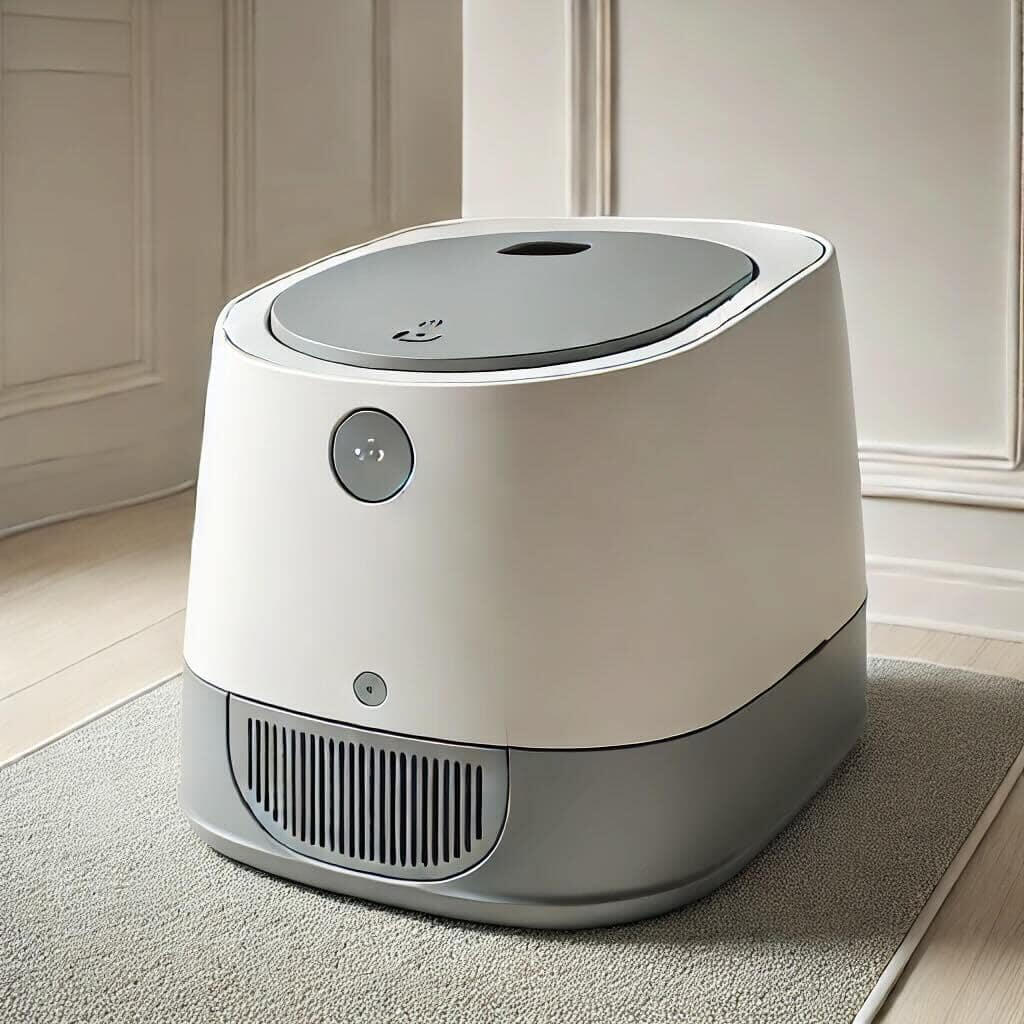
Catbot
Automatic Litter Cleaning Bot for Wood Pellets
Introducing CatBot, the world’s first litter-cleaning robot and a revolutionary device for cat owners. CatBot is the only automatic litter box specifically designed to work with wood litter.

DoubleDecker
Sifting litter box for wood pellets
Our patented sifting litter box optimizes your wood litter experience. Featuring a deep middle pan for up to two weeks of mess-free waste storage, waste disposal is now hassle-free. Our innovative system naturally eliminates odors by allowing sawdust from the wood pellets to continuously cover the waste, keeping your home fresh. A thoughtful design for easy maintenance. DoubleDecker is available for purchase on Amazon.
Our patented sifting litter box optimizes your wood litter experience. Featuring a deep middle pan for up to two weeks of mess-free waste storage, waste disposal is now hassle-free. Our innovative system naturally eliminates odors by allowing sawdust from the wood pellets to continuously cover the waste, keeping your home fresh. A thoughtful design for easy maintenance. DoubleDecker is available for purchase on Amazon.







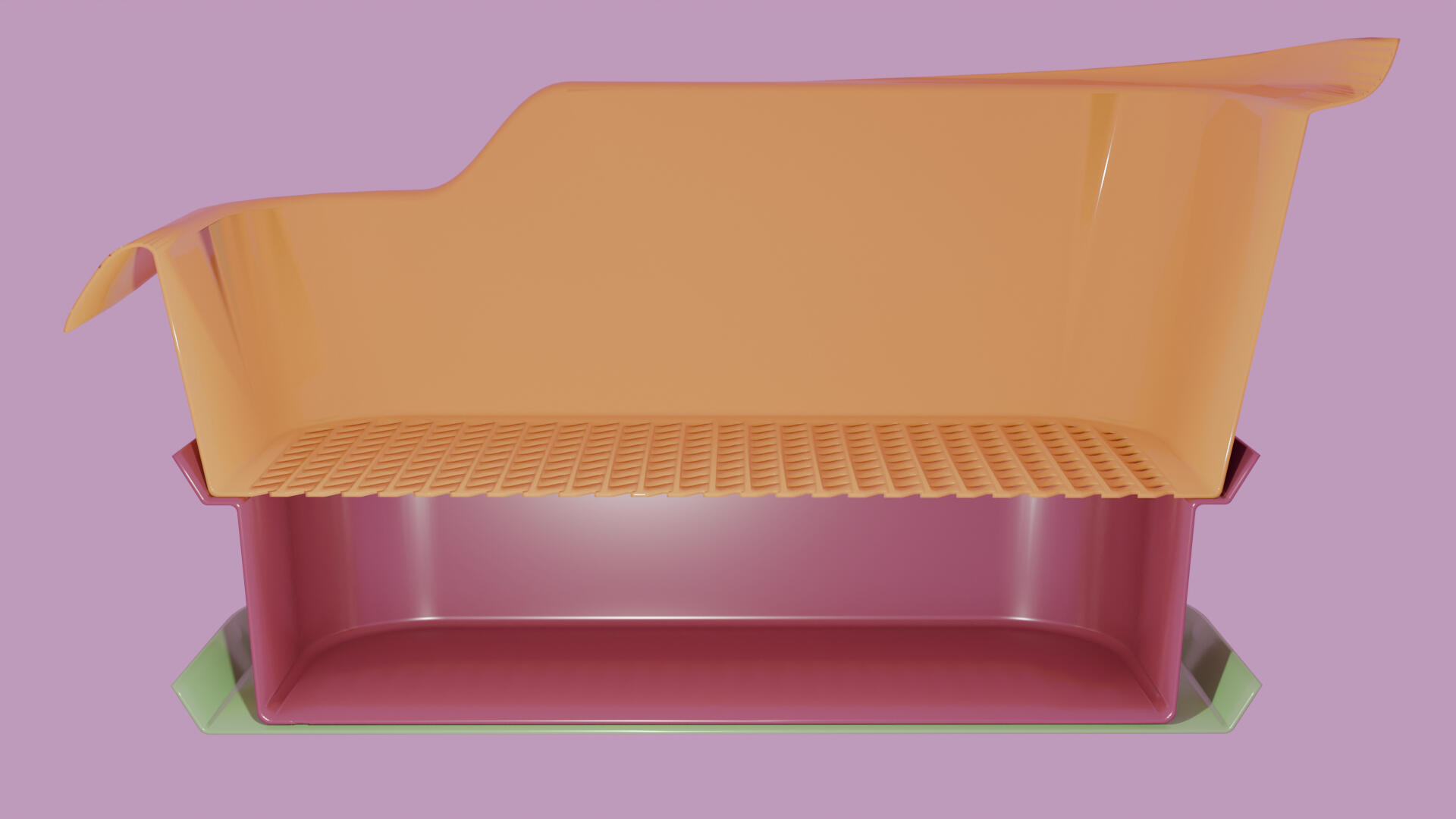

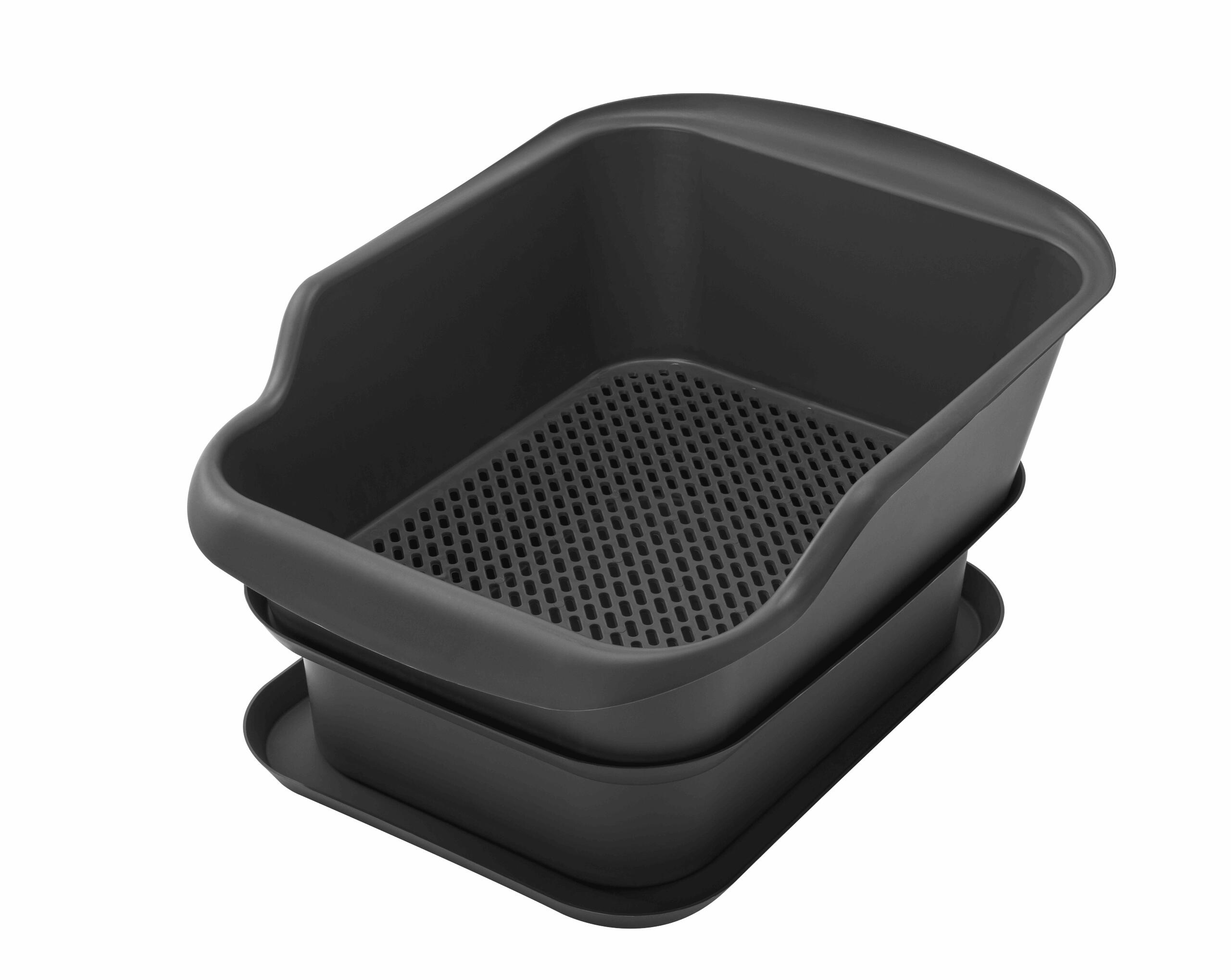

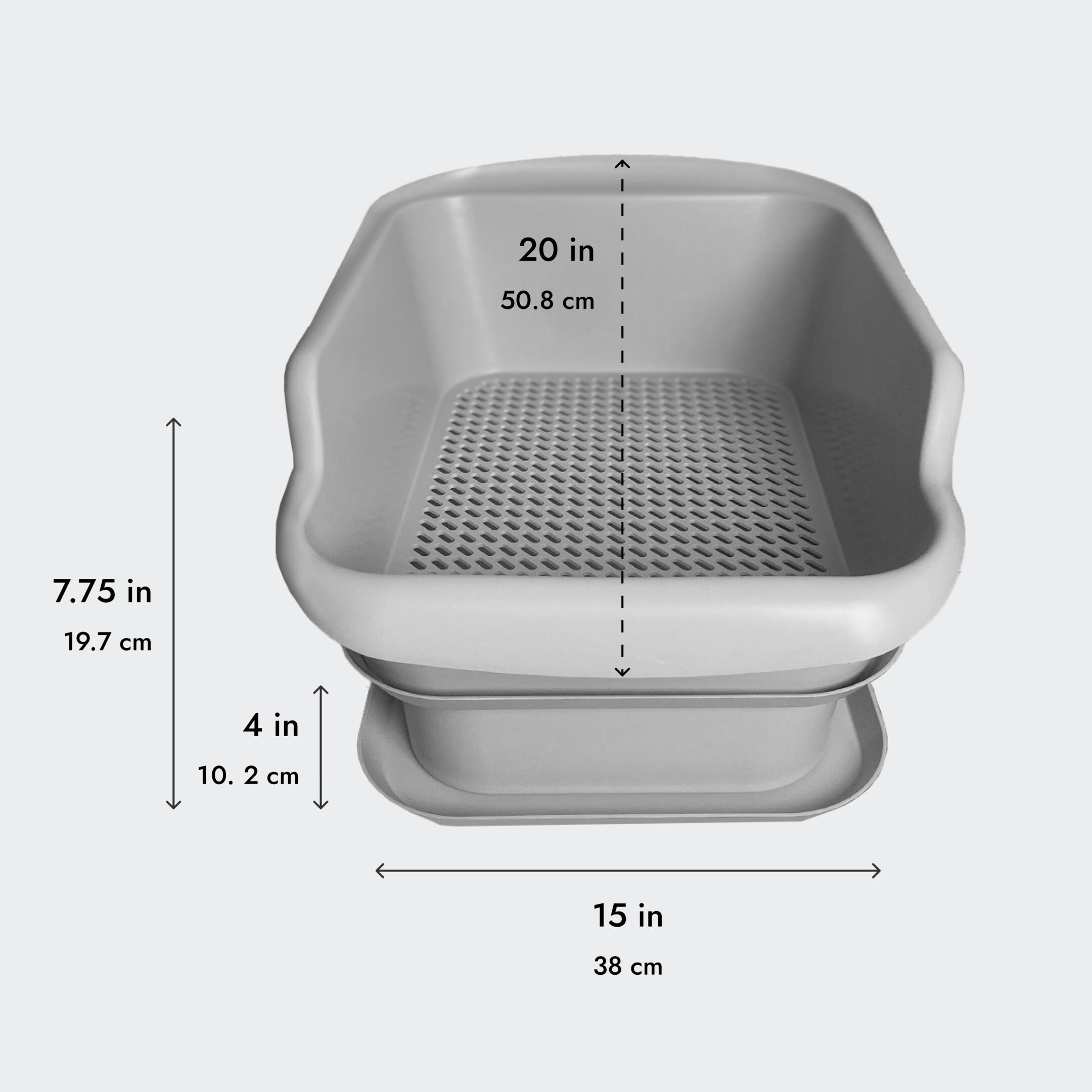
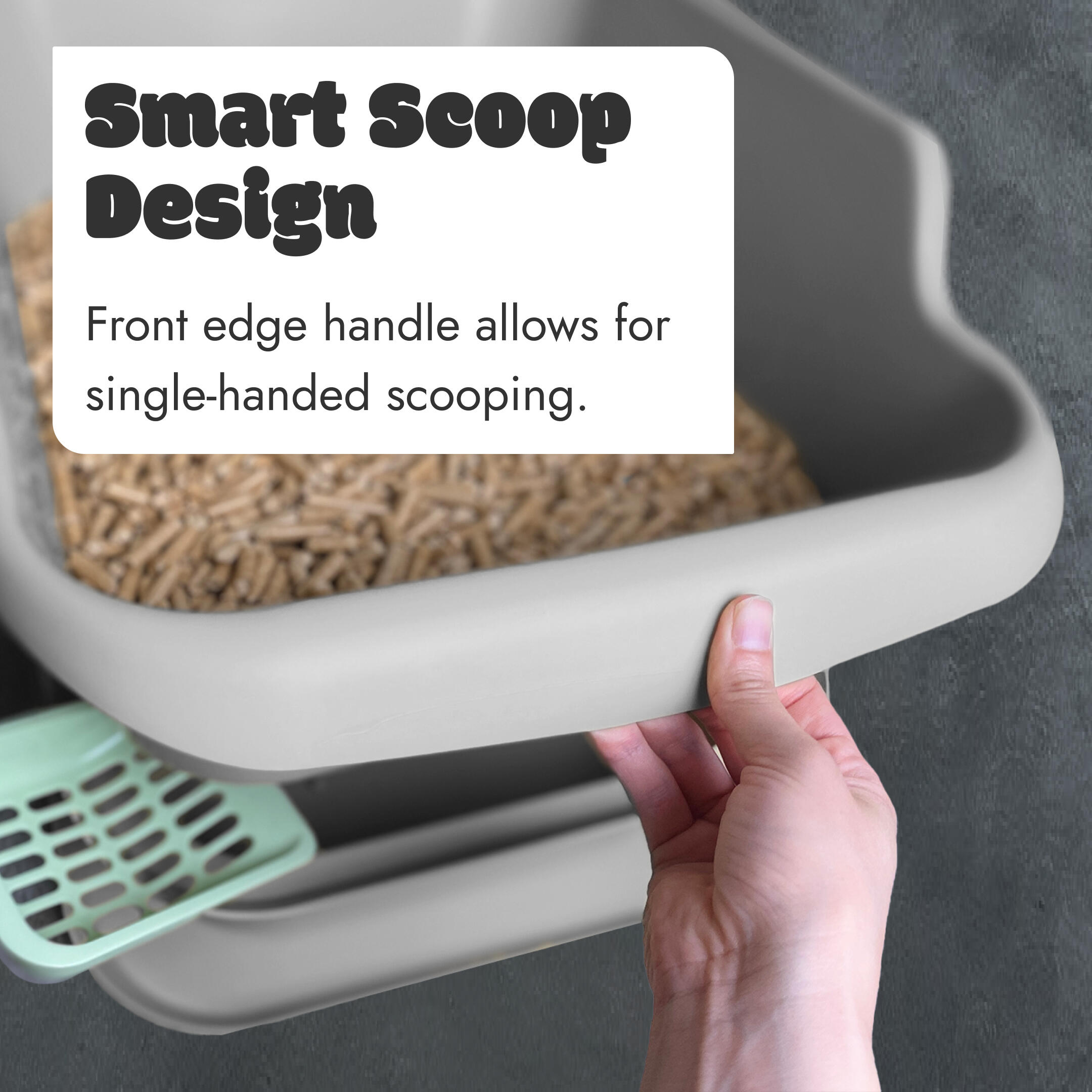




Fit a 13G garbage bag to the storage box for easy cleaning!

Reviews
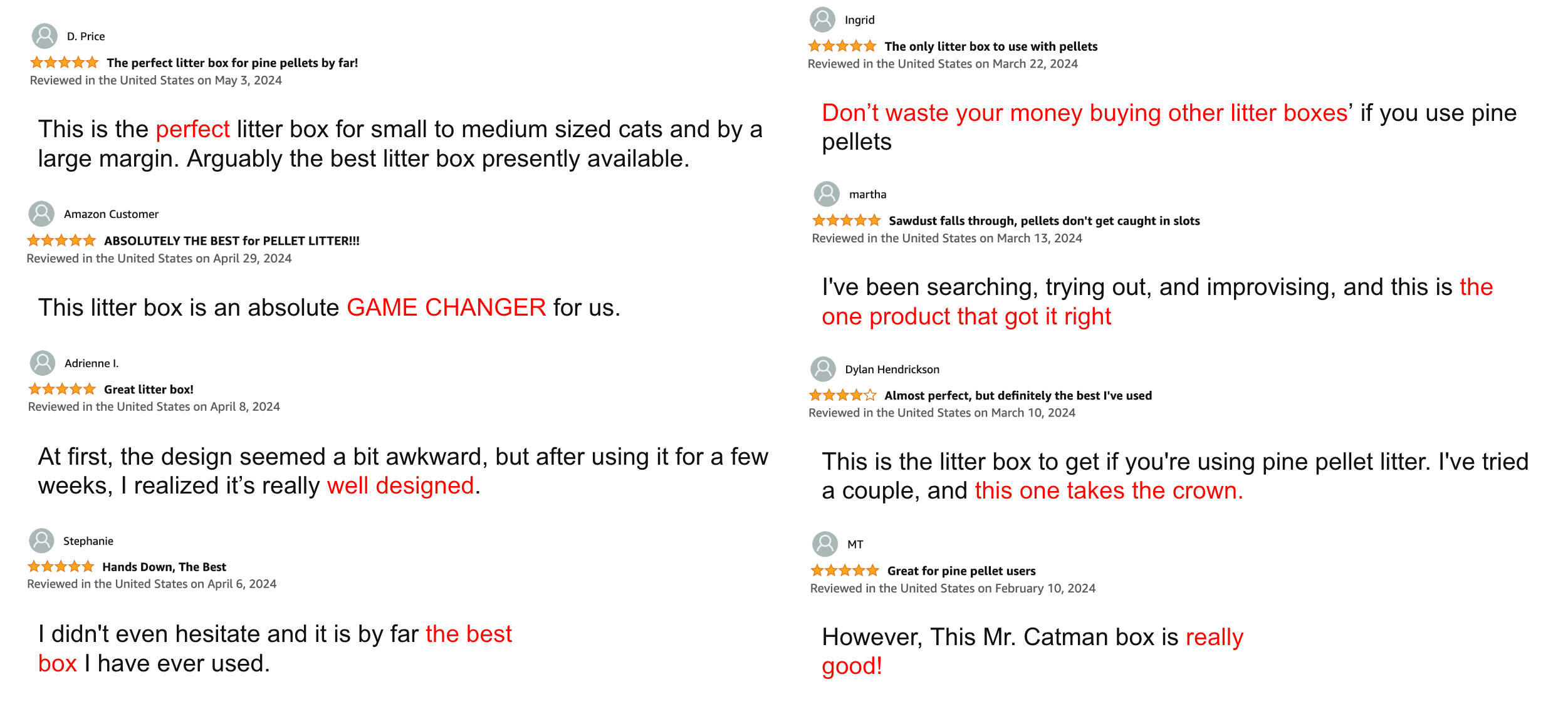
⭐⭐⭐⭐⭐ The perfect litter box for pine pellets by far!
D. Price – Reviewed in the United States on May 3, 2024This is the perfect litter box for small to medium sized cats and by a large margin. Arguably the best litter box presently available and very easy to use and keep clean.We just scoop the poop and move the litter about with a scoop to help wet saw dust fall through the holes and into the collection box. The wet sawdust is also flushable. Takes just a few seconds to clean up. Because of the collecting box size, for one cat you could get almost a full week of use before emptying. I’ve been scooping for almost twenty years so I do have experience with lots of litter boxes. Needs to be a few inches larger in width and length for larger cats. Our cat is a fit 13lbs and can use the box easily but if he gets bigger there could be an issue with the box size. The box is very stable. Our guy stands with his paws on the box rim and there is no issue with stability.A lot of effort has been put into the design and it shows. Should only be used with pine pellets. Never use clay, clumping litter, it will clog the filter holes. Tractor Supply has 40 pound bags for about $8 per bag at the date of writing this. One 40 pound bag will last at least two months for one cat. Tractor Supply sells the pellets as “Horse bedding pellets”. Pine pellets are much better value than anything you can buy from the pet store, biodegradable and no dust, easier scooping and smell good. The color of the plastic fits in with most color schemes. Very high build quality and if used with a plastic bin liner around the collection box should last a very long time. The use of a bin liner for the collection box is a game changer. No dirty encrusted box to clean! Not cheap but better build quality than anything else out there and should last much longer than other boxes. This is a small company and until they can produce litter boxes in large numbers, and get the benefits of scale, the price will not decrease much. Good value considering the build quality and long life expectancy. Excellent customer service. I understand more colors and a larger sized litter box are in the pipeline. Very happy customer.✅ 47 people found this helpful---⭐⭐⭐⭐⭐ By far the best litter box for pine pellets
Julia F. – Reviewed in the United States on December 17, 2024Though the higher price point may be deterring you away from this box, I really highly suggest investing in this one.The lifted box design for the saw dust to fall through is by far the smartest design compared to other sifting boxes I’ve tried. Other boxes when sifting, the saw dust will fall all over making a mess, while this one as my cat is naturally digging and burying the saw dust collects and falls through for much easier cleaning.My cat is also a digger, flinging the litter all over the place, the high walls on this stop 99% of the pellets from flying all over and tracking through rooms.It’s sturdy, easy to clean, a tad of a high price point, but worth it for the ease of access.✅ 7 people found this helpful---⭐⭐⭐⭐⭐ The pine pellet litter system is THE BEST!
Cheryl Bomba – Reviewed in the United States on November 17, 2024Pine pellet litter is THE BEST invention ever! While we have had cats as family members since the 90s, this is the first time we have adopted cats who were previously trained using pine pellets. We wanted to continue with their familiar system, so we purchased the Tractor Supply pellets ($5.99/20 lbs) and discovered this box on Amazon.While (relatively) expensive, I doubt it will ever need to be replaced, and it's PERFECT for its purpose. The slots allow the dust to fall through with little to no pellet loss. I line the bottom layer with a regular litter bag liner, and so far, I only need to change the liner once per week for two cats using the box. (So a typical 30-item box of liners will last more than 6 months). My cats seldom kick pellets outside the box, so the low sides are not an issue. However, since loose pellets would be easy to sweep up with a mini brush and dustpan and return to the box, I don't think it would be an issue even with less tidy cats. Some similar boxes have a drawer that needs to be lined with a pee pad and pulled out to change; reviewers have commented that the process can be messy. This box allows for a simple, zero-mess change of liner.What I love about the pellets is the low cost and the fact that there's no dust, no urine odor, and no litter tracked through the house. Other than returning a few pellets to the box now and then, my floor has stayed spectacularly clean! If you're thinking of switching, some excellent videos on YouTube guide you through the process. And if you switch, this box is for you!The first photo shows how the box looks when ready to be used. The second photo shows the lined bottom layer after the cats had used it for several days. As you can see, there's dust but almost no full pellets.✅ 15 people found this helpful---⭐⭐⭐⭐⭐ Great for pine pellet users
MT – Reviewed in the United States on February 10, 2024This box is really designed for pine pellets. I would not recommend this litter box if you use clumping litter or anything other than pine pellets. I saw a low rated review for this box, but they used clumping litter which is just not what this box is designed for.Anyways, I’ve been looking for a pine pellet litter box that has some space in between the sifter and the bottom of the box and this one fits the bill. The only other pine pellet litter box that has the holes the right size to keep the pellets in the box while also sifting the saw dust is the Arm & Hammer one, which is pretty much the only good litter box on the market for pine pellets (in my experience—I’ve researched a lot of different ones). That one works well, but there’s no dead space between the saw dust and the pellets on top. This causes the wet saw dust to dry out slower so you might have to toss the saw dust out earlier.However, this Mr. Catman box is really good! I can use a liner on the bottom to make clean up easier and now I don’t need to bend over and sift the litter box because the sawdust sifts through naturally. Sometimes I will take my litter scooper and move the litter around so the saw dust sifts through, but other than that, I don’t need to break my back anymore bending over sifting the litter box. The ONLY downside I see is the price! $50 is quite a lot for a litter box, and is more expensive than the Arm & Hammer one I am used to. I’m really surprised that there aren’t more litter boxes like this on the market, because so many consumers are switching to pine pellets now because of ease of clean up, it’s more economic, it’s environmentally friendly, it’s better for your cats’ health, and you can buy a 50 lb bag of it at Tractor Supply, which will last you far longer than the clumping clay litter that’s like $20 you have to purchase every 2 months. Whereas a $5 50lb bag of pine litter will last 4-5 months depending on how many cats you have. That being said, this box is pricey. But I really like the design. It’s just tough to buy 3 of these at the same time (I have 2 cats, so they need 3 boxes) because of the price. I hope the seller of this product will eventually come out with more colors too.One thing I was worried about was the top somehow coming off or flipping over with the litter, but I haven’t had that issue at all. One of my cats likes hanging on the side of the litter box when he does his business and it has never flipped over. The pellets weigh it down pretty well so I don’t think that’s going to be an issue.I’ve had this for a few weeks now, and no issues but if anything comes up that’s wrong with it, I’ll update this review.✅ 44 people found this helpful---⭐⭐⭐⭐⭐ Great litter box, needs to be larger for chonks
Ashley N. Waldo – Reviewed in the United States on August 19, 2024I love this box. I just want it bigger. The company did state it is working on an XL large box and when they launch it I am definitely going to purchase it because I love this system.There are not a lot of easy scooping/sifting methods for pellet litter. I love pellets because it breaks down the ammonia, there is zero dust, and very low tracking. It only smells when they leave a ripe, steaming pile turd but I scoop it out, sprinkle a few pellets and the smell is gone. It’s also stupidly cheap if you get it from Tractor Supply—like $6-8 for a large 40lb bag—40lbs!!As previously mentioned—pine pellets are great but it's a PITA to work with, but this box makes it sooo much easier—easier than clay. I do things a little different than what the company says to do. The company says you can scoop the loafs of poo, lift the top, and toss it in the bottom tier of the box. I just scoop it and toss it in a grocery bag and pitch it. Next you lift the box and shake to sift out the pine shavings. I just use the pooper scooper and stir the pellets and the shavings fall to the bottom. That easy! And there is no urine smell.✅ 17 people found this helpful---⭐⭐⭐⭐⭐ Litter care so much easier!
Lucy – Reviewed in the United States on December 7, 2024I really like this sifting setup!!!! My cat care is so much improved now. I had already switched to pine pellets. Best deal is through Pet Smart, 20# for $11.00, or even cheaper from Tractor Supply.Following the directions exactly and putting a 13# garbage bag with some litter pellets in the collection pan went so smoothly. Our two 12 lb cats use one sifter setup. Instead of shaking the litter to allow the dirty litter to go through holes, I rake it with the scoop. It works great! NO URINE ODOR. Doesn't need emptying for 1 week. Just scoop out the poop and dispose. Add fresh pellets as needed. Using so much less litter!! They do scatter some pellets around but it's solid and so easy to pick up.Thank you to the designer!!! You can get a mesh screen to use initially when transitioning to pellets.✅ 4 people found this helpful---⭐⭐⭐⭐⭐ So easy to clean!!!
Brittany Stone – Reviewed in the United States on December 26, 2024This cat box is wonderful. I recently switched to the pine pellet litter for my two cats, and it has been a total game changer. It does not track and causes minimal dust. I HATED the clumping clay litter I was using because it got in between their toes, and I found it everywhere—under the sofa cushions and in bed. Just gross. With the pellet litter, it has been nothing but heaven compared to the clumping clay litter. It does not track and only causes minimal dust. I found that with the regular cat box I was wasting quite a bit of the unused pellets. Directions on the bag instructed to just "mix" it around, but I wanted to scoop out the used pellets. Well now that I have this new box, it is so much easier and basically zero waste. I scoop out the solids, then shake the box and sifter like I am panning for gold and then clean out the bottom. The price was higher than I wanted to pay, but it is made of durable plastic and so very easy to clean! You won't be disappointed!!!✅ 4 people found this helpful---⭐⭐⭐⭐⭐ Best pine pellet litter box on the market!
Christina Marie – Reviewed in the United States on January 18, 2025I switched a few months back to pellet litter. I did the wrong thing initially and wasted my money on the horrible TC ßrêèżë system, which is way too shallow of a sifting box with an even worse shallow bottom box. I then got the Mr. Catman box, and it's so awesome—I so wish I'd known about it first!!! Very well thought out box, with the 4-inch bottom box and taller top sifting box. I buy the ever so affordable pine pellet litter at TSC and I love how the whole pine pellet litter works now using the Mr. Catman box. My indoor kitty has no issues using the litter at all. I'm excited about the Mr. Catman XL Double Decker boxes soon to come out and have pre-ordered those through the company website as well. I do wish there was a way to purchase the Removable Mesh separately for the original size as I didn't buy that initially, and I have a stray that I take care of and bring inside during bad weather, but he sprays so he stays in an indoor pet playpen kennel, and I want to transition him to pellet litter as well.✅ 3 people found this helpful---⭐⭐⭐⭐⭐ Works well
Rennie – Reviewed in the United States on January 17, 2025My cat has been using this litter box for about 72 hours and so far I am very pleased. She has diabetes and urinates frequently. I use pine pellets that I buy from Tractor Supply. To clean, I just scoop the poop and then use the scooper to move the pellets around and the saw dust falls through the sifter holes easily. The bottom tray that collects the saw dust is deep enough to hold the saw dust and is easily cleaned. I have not noticed any urine odor. So far, so good. :)✅ 2 people found this helpful---⭐⭐⭐⭐⭐ Game changer. Easy to use. Saves time.
Marlana Miranda – Reviewed in the United States on December 28, 2024I tried the expensive litter boxes and hated it. This box used with wood pellets has changed my life. I love it. I no longer have to scoop litter every day. Just remove the poop and the pee can be cleaned every couple of days. When the cats pee, the pellets turn to a saw dust falling through the holes to the holding pan under it. The holding pan can hold a lot and only needs cleaning every couple of days. I wish I found this box sooner.✅ 3 people found this helpful
---⭐⭐⭐⭐⭐ picky picky
Amazon Customer – Reviewed in the United States on December 24, 2024I like it and it holds pine pellets well… the only problem was that my cat refused to try the new litter. Slow transition until this was her only option—stressed the poor girl out. Can't criticize the product if my cat is refusing to adapt (she had no issue moving to a new house though!).✅ 1 person found this helpful---⭐⭐⭐⭐⭐ Perfect box for pine litter
Amazon Customer – Reviewed in the United States on November 24, 2024Perfect pine litter box! Such a game changer. I put a large trash bag on the inside of the collection pan and cover the bottom with a thin layer of pine litter so that it doesn’t start to smell or pool any urine that might seep through the top. For one cat, I only have to change the bag about every two weeks. I use doggy poop bags to grab the poop, but it can also be disposed of in the toilet. It’s just so easy and waaay more hygienic than any other litter or litter box. Would be even more cool if the manufacturer came up with a covered version of this litter box.✅ 3 people found this helpful---⭐⭐⭐⭐⭐ Clever idea
Jennifer A – Reviewed in the United States on December 6, 2024We transitioned to the pine pellets. The first litter box we purchased was from a pet chain store, it came with ceramic pellets and a bottom drawer that you can buy replacement pads to soak up the wet disintegrated pine. This box is bigger and easy to sift and empty!! I do not have to change any pads and I can empty the collection bin once a week. I have two cats and three litter boxes. I hope this helps your decision making!!✅ 3 people found this helpful---⭐⭐⭐⭐⭐ Better than previous pellet box, having trouble finding a good bottom liner
anonymous in VA – Reviewed in the United States on September 7, 2024My first try with a pine pellet litterbox was a success so far as cat behavior went—we have one who had 'discovered' that the bathtub drain works something like a urinal, and he never seemed to like using sand-type litters (doesn't like to cover). The pine pellet setup was immediately appealing to him and solved the bathtub issue. The first box was made from a restaurant bus and drain pan combination I picked up, with a hospital bed pad as the liner for the bottom pan. It worked, but the top pan didn't really have enough holes to sift easily. This pan is designed much better for sifting and scooping and it looks much nicer than the drain pan setup. The bed pad liners are awkward though (bunching and sliding around when you lift and shake the top pan), and they are regular plastic which I'd rather avoid. I'm having trouble finding a bio-based liner bag that will fit the bottom pan properly. The liners I bought for the litter robot (which nobody wanted to use) are too small—stretching the bag to fit over the edges obstructs flow from the corners which is the preferred tinkle zone, and caused some backsliding for the cat when I tried it. It would be nice if the manufacturer offered some (affordable) bio-based liner bags designed to fit the bottom pan properly, aligning to the sides without big air bubbles and easy to secure around the rim.✅ 2 people found this helpful---⭐⭐⭐⭐⭐ Fantastic!!!
GCSC – Reviewed in the United States on August 17, 2024Decided to switch to pine pellet litter and this litter box made the transition, for me, so easy. The box could be a little larger and the sides a little higher but it works! And it is so easy. Remove feces, sift the litter with your scoop or shake the pan, I line the bottom pan with some pellets to absorb any urine initially. I empty the pine dust once a week and wash out the bottom pan. 5 minutes top! The bottom pan is nice and deep and holds a lot of pine dust. There is no odor other than pine. I have an 8-month-old kitten, he is small so his output will increase. I debated with buying a Tidy Cat Breeze litter box and converting it to work with pine pellets—there are YouTube videos for that, and I think the sides would be higher, but I didn’t want to go through the trouble and the cost would be about the same. Pine pellet litter is the BEST and this litter box makes it all so easy. Switch to pine pellets and try this box. Our local animal shelter uses pine pellets, but not these boxes, and they’re the one who turned me onto pine pellets. We used clay litter with all our previous cats; pine pellets are so easy and better for the animals and the environment. Also, less expensive—$6.99 for 40lbs at Tractor Supply.✅ 3 people found this helpful---⭐⭐⭐⭐⭐ Fantastic!
Stratiotes7 – Reviewed in the United States on November 7, 2024My cats have been using pine litter for many years. They had a Feline Pine sifting litterbox but my male cat kept peeing off the side because it wasn't tall enough. I couldn't find a litterbox that was made for pine pellets that could stop this. It was such a pain cleaning cat pee all the time. I came across this litterbox and decided to order it. WHOA, total game changer! My cats used it right away and now I don't have to clean pee off the side because the sides are tall enough. It's also easier to clean and the bottom part holds more pee than the other one they were using. It might seem a little expensive for a litterbox but it was worth every penny for us!✅ 3 people found this helpful---⭐⭐⭐⭐⭐ I didn’t want to pay this much but…
Amazon Customer – Reviewed in the United States on December 7, 2024This litter box is amazing. I have owned them all. Savannah cats are difficult. I have had two different automatic boxes, the cheap ones, the shifting ones—this is my favorite of them all. Cheap litter and it waits for me to have time to clean it. Stays clean enough that my cat will continue to use it regularly.✅ 3 people found this helpful---⭐⭐⭐⭐⭐ life changing
Rae – Reviewed in the United States on July 18, 2024It may seem a little extreme, but these litter boxes are making a world of a difference for me. I love pine litter; I've used it for years, but the tracking of dirty litter has been driving me crazy. That, and between three cats, I go through a 40# bag in less than a month. These boxes solve both those problems. I'm amazed to see zero tracking—the most mess is when I scoop and drop a couple of pellets between the box and my litter genie. I'm also amazed at how little litter it uses up; at first I was concerned my cats were going somewhere outside the box! It's true they seem a little small, but my largest cat doesn't seem bothered in the least. The regular kitchen bags I had at home didn't seem to fit well over the storage tray (opening/drawstring too small) but I used some litter box liners I had leftover, even though they are a bit big. I'll buy a smaller size next time and that should work well. These boxes are really easy to use and well designed. When buying, I was disappointed they didn't have a lid, as I was having an issue with odors in my closets where the boxes are located. Turns out, there's zero odor from used litter, and this is a non-issue. These might seem pricy compared to an $11 or so box, but even if I needed five of them I would gladly buy again. I feel so much relief for my cats' and my own health after using these boxes. A must for better hygiene. Easiest 5 stars I've ever given!✅ 5 people found this helpful---⭐⭐⭐⭐⭐ two paws up!
r is for cats – Reviewed in the United States on November 20, 2024Meow Meow! says my cat, which I interpret as two thumbs up… or in her case, two paws up! This is a deep box for litter and it fits in a tight spot between the potty and the cabinet. Even though it doesn't have a lid, the litter does not go flying everywhere when my cat scratches around. The layered box is simple to use and when combined with puppy pads (cut in half) the litter system is a big win!✅ 2 people found this helpful---⭐⭐⭐⭐⭐ My cat loves it and it's good for the environment!
Adam Cottrill – Reviewed in the United States on June 18, 2024I changed over to pine litter for my cat years ago to reduce impact on the environment while saving money. I tried Tidy Cats litter system in the past but the bottom pan was too shallow. I looked up hacks for that system but nothing sat right for me. Then I found this Mr. Catman litter box! I'm so happy I did because my cat LOVES it. I slowly transitioned him to it and gave him multiple other litter boxes to use as alternatives. But eventually, he preferred to use ONLY this box (one time, I forgot to clean it for a day and he continued to use the Mr. Catman box even though the alternative litter boxes next to it were clean). I think my cat likes that the box is a little elevated because it makes him feel safe. He's a 13.5lb British short-hair and has plenty of room and hasn't ever pooped on the side of the box. He doesn't kick litter out of the box either. It's super easy to sift the pine dust down to the bottom. I've had it for 2 weeks now and it's not even halfway full of dust yet so I've yet to clean out the bottom. For the bottom pan of the box, I found compostable/biodegradable litter liner bags on Amazon so I'm very happy with the minimal impact this whole system has on the environment. Combined with the Litter Genie I found at a Goodwill, I would say my kitty's bathroom is a nice setup! I'm so glad I read the positive reviews that convinced me to buy this box and I hope I can convince others to make the switch.✅ 4 people found this helpful
---⭐⭐⭐⭐⭐ ABSOLUTELY THE BEST for PELLET LITTER!!!
Amazon Customer – Reviewed in the United States on April 29, 2024This litter box is an absolute GAME CHANGER for us. We use pellet litter for our cats because of all of the respiratory issues that come with clay litter. We both work 7 days per week, and often long hours, so keeping up with a ton of litter on a daily basis is completely unmanageable. We have spent hundreds (maybe a thousand?) of dollars on countless sifting litter boxes looking for a solution (even trying to make one ourselves), but none of the sifting litter boxes we have been able to find have enough room underneath to truly allow more than 1 day of sawdust to fall through, nevermind lining the bottom with a litter trash bag, then the litter boxes wouldn’t sift at all.THIS litter box does not fill up too quickly at all. I can line the bottom with a trash/litter bag, and it still has PLENTY of room at the bottom to catch the sawdust for days. AND I don’t have to use a lot of litter. This litter box makes my job and life so easy. I check it once a day, pull the little poopy nuggets out with doggie poo bags, and sift the rest to the bottom. It takes me no time at all to maintain this litter. I’m pretty sure I won’t have to remove the trash bag for a few weeks—that’s how nicely deep the bottom pan is. It also fits perfectly into our litter box furniture. I don’t have enough good things to say about this litter box except: FINALLY!!! I could not be more grateful for someone using their damn brain and making a truly functional sifting litter box for wood pellet litter. I’ve already bought 3 of these to replace all of the others. Super easy to use, super easy to clean, and absolutely worth every penny!✅ 13 people found this helpful---⭐⭐⭐⭐⭐ Great system
Bravari – Reviewed in the United States on December 9, 2024I love the tray, it could be a little more sturdy for chonky boys but they are getting there.---⭐⭐⭐⭐⭐ Great design--probably the best litter box concept
CM – Reviewed in the United States on November 26, 2024Easy to maintain. The box can get heavy when sifting, so it requires some strength, but overall we have loved this box for our two cats. We show it off to fellow cat owners and friends.✅ 2 people found this helpful---⭐⭐⭐⭐⭐ Amazing!
Autumn Thomas – Reviewed in the United States on September 15, 2024I tried pine pellets when I first got my kitty. But I didn't get a sifting litter box. I loved the difference in smell alone. My daughter refused to use them and we went to clay litter. I HATED THE CLAY LITTER! No matter how new, it smelled like a litter box and like ammonia! So I went back to the pine pellets, but purchased this litter box. I LOVE IT! I put a trash bag over the lower pan, like in the video. And I have the easiest time cleaning. It never smells like pee or ammonia! It only stinks when there is a fresh poop in there. When I scoop the poop, it goes straight in the toilet! Best money I have spent in years!✅ 3 people found this helpful---⭐⭐⭐⭐⭐ Awesome pan for pine pellet litter!
Jessica – Reviewed in the United States on February 27, 2024I wanted to try pine pellet cat litter due to allergies that clay and crystal litter were just making worse anytime the box needed to be cleaned. I have 4 cats and this is the first time they have used pellet litter. We did do the BoxieCat Pine before but stopped because of the tracking going on with 4 cats getting pine shavings everywhere. One of my boys is over 20lbs and I was concerned the pan might cave under his weight. It has not done that at all and is stronger than I thought it would be. It is taller than I thought as well and I have added the stairs so my cats can see in easily before entering. This was needed as my boys weren't used to the height at all since it is especially a pan on top of another pan and I would strongly recommend adding a step for your fur babies. Mine certainly liked this add on. The holes are big enough for the dust to fall thru and I find that I don't need to shake it at all. Just scoop out the solids and swirl the pellets around and the dust will fall thru on its own. I love that I can put a bag on the bottom pan and just toss that out at the end of the week. I also found the tray to be a nice addition and is useful when it came time to get the bag out from the bottom pan. I only wish it came in a stainless steel option. Especially with having allergies, stainless steel makes it much less bothersome when I need to handle this chore.✅ 26 people found this helpful---⭐⭐⭐⭐⭐ THANK YOU MR CATMAN
allig – Reviewed in the United States on November 7, 2024I could write a novel about how this litter box has saved me. I was spending a fortune on crystal litter; my old cat pees like 1000 times a day; this litter box is genius; the pellets are super affordable, and there is zero smell. I can't recommend this enough—it's inexpensive, and it doesn't require that crazy expensive crystal litter. Such a perfect design.✅ 3 people found this helpful---⭐⭐⭐⭐⭐ Hands Down, The Best
Stephanie – Reviewed in the United States on April 6, 2024Yes it's pricey, but for wood pellets you get from a feed store (where it's extremely inexpensive) this has been the best litter box style I have used yet. My cats were already using pellets in a (sifting) litter box that I had to alter to make using pellets feasible, which was starting to be as big of a hassle as a clay litter box. I was looking for a better box when this one showed up in my search. I didn't even hesitate and it is by far the best box I have ever used. In fact, when they come out with an XL version I will buy that too. I love the fact that the catch box is deep enough to provide adequate clearance for holding the wood dust but still have the slotted box fully supportive for even heavier cats. Hurray, no wedges, no makeshift supports to keep the two boxes distanced enough to collect the litter. So, in my life, this box pays for itself in less than 3 months. I've told all the cat owners I know to switch to this box. Some already have. Give this box a try. When you love it, leave a review. People like me and you read those reviews and this cat box is worthy of the time it takes to make one.✅ 5 people found this helpful---⭐⭐⭐⭐⭐ An absolute Must for Anyone Using Natural Pellet Litter!
Ryan Caulfield – Reviewed in the United States on November 23, 2024It works exactly as advertised and has immediately improved the hygiene of my cat’s litter box with a very simple and effective means of filtering the sawdust from the pellets.✅ 5 people found this helpful---⭐⭐⭐⭐⭐ Great Solution
Susan P Patrick – Reviewed in the United States on July 29, 2024We recently adopted a feral cat after finally gaining his trust. I bought some name brand clumping litter. I was shocked at the amount of litter that was tracked throughout the house. My son recommended the XL brand name pellet litter system, so I purchased that and was pleased with no more tracking. I wanted a secondary litter box that didn’t take up so much floor space. This Mr. Cattman litter box is even better than the XL litter system I bought previously. The sides are high and the below storage area is deep. I have pet pee pads that I place in the bottom that catch all the moisture. I am now thinking of purchasing another to replace the XL litter box. It is expensive, but for me, I think the investment is worth it.✅ 3 people found this helpful---⭐⭐⭐⭐⭐ WORTH IT
Hannah – Reviewed in the United States on September 18, 2024I would pay $100+ for this thing. I just moved from my apartment into a tiny dorm with my cat and was really, really worried about it smelling/being in such close proximity to the litter box because I’m super sensitive to smells. This box is incredible—I use pine pellets, a trash bag in the bottom with some paper towels in it, pick up the poops with some tissue, and toss it in the storage part and there is NO SMELL. I was worried the contents of the storage part would smell but was pleasantly surprised! Wish I had this for the past 12 years.✅ 4 people found this helpful
---⭐⭐⭐⭐⭐ Great box
raddav – Reviewed in the United States on October 21, 2024We switched to pellets. My husband has drilled more holes in boxes than I care to mention. The DIY boxes are okay but just fall short—I have 4 cats… 3 Cornish, 1 Devon… we run 5 boxes. THESE boxes are fabulous! Yes, they can be larger but they are perfect for our gang! They sift the pellets fabulously! We use, love, and recommend them wholeheartedly!✅ 3 people found this helpful---⭐⭐⭐⭐⭐ BEST cat litter system!
Amazon Customer – Reviewed in the United States on August 30, 2024I was already using pine pellets ["horse bedding" from Tractor Supply] and was searching for a sifting box system or getting ready to make my own. This product is perfect! Pellets don't fall through but the damp sawdust does easily; I don't even have to stir much. Just place the sifting box on the tray, remove the #2 catch box, place the sifter back on the catch box and maybe stir a bit. Going on several days and just now have to empty the catch box & add a bit of fresh pellets; no odor, no daily trip to the trash trying to spoon out sawdust. Works great, economical, and my 10 lb cat loves it.✅ 5 people found this helpful---⭐⭐⭐⭐⭐ Perfect for Pine Pellets
Perfect for Pine Pellets – Reviewed in the United States on November 4, 2024Line the bottom with a pee pad to absorb the urine, scoop out the poo and sift daily. Once a week dump the sawdust, give the box a quick rinse, and line it with a fresh pad.✅ 6 people found this helpful---⭐⭐⭐⭐⭐ Great box!
Kenneth – Reviewed in the United States on September 16, 2024It fits my cat well. I appreciate the quality. I use pinto beans and kidney beans in it currently. Time will tell if I switch to wood pellets again. The Tidy Breeze cat litter pads fit perfectly, and I highly recommend dishing out the money to get those versus anything cheaper. You’ll thank yourself later for not being cheap when wanting quality.✅ 3 people found this helpful---⭐⭐⭐⭐⭐ Awesome litter box for sifting pine pellets
Mike – Reviewed in the United States on July 16, 2024It really is as advertised. I slapped a 10-gallon trash bag into the bottom catch pan and sifted pine litter pellets for a couple of weeks before it was full. I'd advise people to add some pine litter into the bottom for the bag to absorb some urine to suppress the stinkiness during a fresh bag change.Cleanup is hassle free. Try not to shake the top box independently from the bottom box. If your bags are liners like mine, they will tear and urine will leak past the bag.It is expensive, but it's worth the price if you don't want to dump money into figuring out a different solution. This box really is the move.✅ 3 people found this helpful---⭐⭐⭐⭐⭐ Best pine litter box available.
Some guy – Reviewed in the United States on November 14, 2024A little pricey IMO but it is the best pine litter box available that I could find.✅ 3 people found this helpful---⭐⭐⭐⭐⭐ The best I have found for pine pellets
PM – Reviewed in the United States on September 29, 2024I have tried two other brands and even made one myself from a plastic bin, but all of them have had issues. This one is perfect for pine pellets. The waste falls in the bottom easily and there is plenty of storage. I just wish they sold a longer, wider version—25% longer/wider would be great.✅ 3 people found this helpful---⭐⭐⭐⭐⭐ Great Quality
CoCraft – Reviewed in the United States on September 24, 2024I have been waiting and hoping that someone would design a larger litter box to sift wood pellets. This one does everything it claims it will. We have 2 cats, and the reservoir pan really does hold 1 week worth of sawdust particles. We still scoop out the solid matter daily, but that is easy to do. Highly recommend this one!✅ 3 people found this helpful---⭐⭐⭐⭐⭐ Best palette litter box available
Placeholder – Reviewed in the United States on June 20, 2024This pellet litter box is great—it solved my problem of tracking sawdust basically through my house. It's easy to clean and looks like it'll last for a long time. The only thing I have a problem with is that it is a little bit pricey and I'm on a fixed income with social security so I'm going to have to just kind of stretch things out because I need like three more. I have several kitty cats. And they seem to like it. I use the horse pellets from Tractor Supply and it goes quite a long ways and it's easy to use so yes, it is a very good product and I would definitely recommend it.✅ 10 people found this helpful
---⭐⭐⭐⭐⭐ It's amazing
Will – Reviewed in the United States on November 7, 2024Best pine litter box I've used. I used to use the Breeze system with pine but this is so much better.✅ 3 people found this helpful---⭐⭐⭐⭐⭐ Great litter box!
Adrienne I. – Reviewed in the United States on April 8, 2024At first, the design seemed a bit awkward, but after using it for a few weeks, I realized it’s really well designed. The upper level locks in any odor from the lower box and it really holds a week’s worth of litter waste. The sieve design doesn’t allow urine to sit in the pan—which wastes pellets—so it’s really reduced the amount of pellets I need for each refill. Cleanup is also very easy. Just line the bottom box with an office-sized trash bag and wrap it all up on trash day. It’s a little pricey, but I think it’s well worth it. I just wish it came in a larger size for bigger cats. Also, it’s a lot higher than a typical litter box so keep that in mind if your litter box is placed in a furniture-type enclosure.✅ 8 people found this helpful---⭐⭐⭐⭐⭐ Great for pine litter
Li – Reviewed in the United States on July 1, 2024This is an amazing litterbox for pine litter! We previously used the Arm & Hammer sifting litterbox but it wasn’t really made for pine litter & cleaning was a hassle.With this litterbox, it’s so easy to clean my cat’s litter. I just use the litter scoop and move the sawdust and pee around the holes so it goes down. My cat easily made the transition to her new litterbox and is able to climb on (I was worried it’d be too high). I feel it is slightly expensive for what it is but there aren’t that many options for pine litter so… besides the price, I think this litterbox is great.✅ 3 people found this helpful---⭐⭐⭐⭐⭐ I look forward to trying the large litter box and capsule pellets!
Tcbbab – Reviewed in the United States on July 12, 2024The company contacted me to offer a full refund for the small litter box (which was advertised as large) and let me know a large will be available in the future. I do appreciate startup businesses, and so I will absolutely give them another chance! I hope our kitty will like a larger box with paw-friendly pellets. It is a great design, just too expensive right now for the size. I totally get inflation and manufacturing prices/tax and fees etc. I do hope the best for this company, who truly does seem to have good ethics. Thank you.✅ 2 people found this helpful---⭐⭐⭐⭐⭐ Perfect for wood pine pellets!
Kevin – Reviewed in the United States on September 5, 2024It's so hard to find a proper litter box actually designed for pine wood pellets. This is amazing!I put a 30-inch "Jumbo" size puppy pad between the two main parts. It keeps smells down and makes the sawdust removal trivial.The only way they could make this better is to add a roof over it.✅ 2 people found this helpful---⭐⭐⭐⭐⭐ Easy to clean litter box
Maryland – Reviewed in the United States on August 30, 2024This litter box is so easy to clean. It keeps solid pellets in place, and the sawdust goes through the slots into the pan below. The only problem I have encountered is that it is not made for bigger cats—I wish it came in an XXL size.✅ 2 people found this helpful---⭐⭐⭐⭐⭐ Best Pellet litterbox
Amazon Customer – Reviewed in the United States on October 26, 2024This is my 3rd and I love it for pine pellets. I've tried many.✅ 3 people found this helpful---⭐⭐⭐⭐⭐ Perfect for my kitten
Debra Moorhead – Reviewed in the United States on June 10, 2024• This sifts my pine pellets perfectly!
• It’s a great size for my kitten—we shall see how it holds up when she grows.
• The only thing is that the pee falls straight down to the holding bin before the pellets at the top can absorb it, so I like to start off with a thin layer of pine pellets down below to soak that up and prevent smells.
• I wish it came with a cover, but this was the only sifting litter box I’ve been able to find with a substantially sized sawdust bin.✅ 7 people found this helpful---⭐⭐⭐⭐⭐ First-time Pine Pellets user-friendly
Fran – Reviewed in the United States on May 24, 2024Was trying to find a pine pellet litter box for my two cats since the clumping litter I've been using is really dusty and makes my husband sneeze so badly. This litter box looks new and reasonable to me so I got it and have been using it for 4 months now. Everything works pretty well. I don’t need to dump the litter every day which is really nice and easy for me and my husband.
Highly recommend it to those who are switching to pine pellets or are looking for a new pine pellet litter box for your cats!✅ 2 people found this helpful---⭐⭐⭐⭐⭐ Perfect for pellet litter
rarae – Reviewed in the United States on October 2, 2024Sturdy for the cats and the used pellet falls through from the urine. Easy to empty out weekly the used pellet.✅ 2 people found this helpful
---⭐⭐⭐⭐⭐ Works great!
niceCube – Reviewed in the United States on July 14, 2024We have been using wood pellets for litter since 2018 or earlier and have gone through a number of litter boxes trying to get a good sifting system going. This litter box makes it so easy!! We love the bottom tray for when we take the litter out to the trash—we don’t use a bag but I see the benefits; we just don’t find we need one. Very sturdy plastic, should last us for years!✅ 3 people found this helpful---⭐⭐⭐⭐⭐ Great for pine pellets and big cats
AJM – Reviewed in the United States on June 9, 2024We had been using an adapted Breeze box with a cover to do the pine pellets method. Well, we grew a gorilla cat and he started going outside because he didn't fit in the covered box anymore.This works perfectly. We buy bags of pine pellets cheap at the Tractor Supply store and put puppy pads at the very bottom to catch the shavings. Our cat pees a lot so we empty the bottom tray once a week. We scoop the poop and shake it down once a day.Love it!✅ 3 people found this helpful---⭐⭐⭐⭐⭐ Perfect for wood pellet litter and easy to transition to.
Justin Parrish – Reviewed in the United States on May 7, 2024
(Play Video)I have had this for a week and found it pretty easy to transition my cats over to pine pellets. I set one box up as pellets only and another box with some parchment paper covering the slots (so old litter doesn't fall through) and added their old litter with 1 or 2 handfuls of the wood litter. Every time I clean something out I drop another handful in there so they get used to the change gradually and to the presence of the already full box. Great product and wish I had gotten it earlier.✅ 20 people found this helpful---⭐⭐⭐⭐⭐ Love it! Works better than the Breeze system
Shannon Kate Bartonico – Reviewed in the United States on August 20, 2024I had been looking for a good pine pellet litter box and this works perfectly for my kitty! The sawdust filters through easily, and my kitty seems to be kicking out less pellets! Totally worth the price for me.✅ 2 people found this helpful---⭐⭐⭐⭐⭐ Good size and design.
Michelle – Reviewed in the United States on June 12, 2024This box sits on a higher catch tray for the sawdust-like breakdown of the wet pellets so that you don't have to scoop out that bottom tray every day.
It works well. The wood pellets are cheaper and the letterbox stinky ammonia smell is gone. I'm never going back to clay litter. PS: Buy horse stall pellets at the farm store. 40 lb bag for $7. Cheaper than the pet store by a lot.✅ 3 people found this helpful---⭐⭐⭐⭐⭐ Great sifting box
Sunny – Reviewed in the United States on August 28, 2024This is great if you're using pine pellets. I love it. It has made cleaning the box so much easier. The only thing missing is a cover.✅ 2 people found this helpful---⭐⭐⭐⭐⭐ Works with felines pine
Maggie Heim – Reviewed in the United States on August 13, 2024This is great. Works well with Feline Pine. I used it to replace one litter box, but I may replace my other two as well.✅ 2 people found this helpful---⭐⭐⭐⭐⭐ Best litterbox for pine pellets
Cari L – Reviewed in the United States on August 22, 2024After DIYing and trying other sifting options over the years, this litterbox is a godsend. I can't wait for the extra large version to drop.✅ 2 people found this helpful---⭐⭐⭐⭐⭐ Perfect for Pine Pellets!
Karine C – Reviewed in the United States on March 5, 2024Perfect for pine pellets. I like that there’s a tray under so when you remove the top you put it on the tray so there’s no mess of pine residue on the floor. They suggest putting a trash bag but you can put a 28x30 training pad instead—it works better! The only thing I would love is the box being a little bigger—an inch bigger in length and width with high edges—but overall great product!✅ 10 people found this helpful---⭐⭐⭐⭐⭐ The best pellet-based litter pan!
Pam C – Reviewed in the United States on February 13, 2024We love using pine pellets—and our cats do too! After trying several sifting style pans, which don't have enough depth below the sifting level, we finally found one custom-made for the pine pellet process. Now not only is there no odor, this box has the right sized holes to allow the sawdust to fall into a DEEP pan. We put a puppy pad in the bottom pan, and just lift the folded-over corners for instant cleanup. Loving this! And our cats took right to it.✅ 3 people found this helpful
---⭐⭐⭐⭐⭐ Great
BugsBunny98 – Reviewed in the United States on June 15, 2024I love this cat litter box, pine pellets are the best litter I have ever used and I have been through plenty of them. This works perfectly for pine pellets. Love it, it is easy to use and maintain.✅ 2 people found this helpful---⭐⭐⭐⭐⭐ Super easy to use
Sarah – Reviewed in the United States on May 24, 2024I was a little nervous about transitioning my cats to the pellets, but this honestly made it super easy to do. This design makes it super easy to clean and it’s nice not having litter kicked everywhere all the time now 🥹✅ 2 people found this helpful---⭐⭐⭐⭐⭐ Easy to sift
kim harris – Reviewed in the United States on August 2, 2024This does an amazing job at sifting and is super easy to adjust your cats too!✅ 1 person found this helpful---⭐⭐⭐⭐⭐ Game changer
JO – Reviewed in the United States on June 7, 2024This cat litter box just makes sense for those who want to use wood pellets. If you want your life to be much easier this is the right product. You will not find any other box better than this.✅ 2 people found this helpful---⭐⭐⭐⭐⭐ The only litter box to use with pellets
Ingrid – Reviewed in the United States on March 22, 2024Don’t waste your money buying other litter boxes—if you use pine pellets this is the only one that gives a generous space between the top and bottom containers, with a large amount of pellet dust that can be stored and fall through to the bottom container. So happy I finally found a litter box specifically made for pine pellet litter.✅ 3 people found this helpful---⭐⭐⭐⭐⭐ Sawdust falls through, pellets don't get caught in slots
martha – Reviewed in the United States on March 13, 2024Wow, did I get the last two? I see this item isn't available anymore, too bad! I've been searching, trying out, and improvising, and this is the one product that got it right: Lots of room below for the "used" sawdust, which falls through readily, and the pine pellets don't get caught in the grate. For which I am very grateful!✅ 3 people found this helpful---⭐⭐⭐⭐⭐ Greatest for pine pellets
lois – Reviewed in the United States on June 27, 2024The best pine pellet litter box. This works fantastic. It’s sturdy enough for a 20 lb cat. Very good value for the dollar.✅ 2 people found this helpful---⭐⭐⭐⭐⭐ Fantastic if you are a pine pellet user
Amazon Customer – Reviewed in the United States on March 30, 2024Simple design but perfect for pine pellet use. The tray is plenty deep to sift into and it’s super easy to clean. I literally have thousands of dollars of litter robots but this old thing is their go-to?!? Cats…✅ 3 people found this helpful---⭐⭐⭐⭐⭐ Good product
Amazon Customer – Reviewed in the United States on July 13, 2024Would buy again!✅ 1 person found this helpful
---⭐⭐⭐⭐⭐ I've been waiting for this!
Jessica S. – Reviewed in the United States on August 3, 2024
Color: GreyAfter discovering how cheap pine pellets are, I switched to them a long while ago. I used a home-made setup with a sifting pan on top of a cooling rack in a litter box, but it was fairly unstable and got gross after a while. I've been waiting for this forever! Can't wait for the XL!✅ 2 people found this helpful---⭐⭐⭐⭐⭐ Mr. Catman Large Sifting Pan Cat Litter Box review
Customer Review – Reviewed in the United States on January 23, 2024I have 2 cats and have been using pine pellets for litter in regular litter boxes for the last year. This box is designed for use with pine pellets so I had to get it. For those who haven't used pine pellets as litter, it works like this: Kitty whizzes on the pine pellets and those pellets turn into dust, which falls through the holes in the litter pan into the waste pan below. You still have to scoop out the doody but once you do that it's basically a refreshed box.The waste pan below gets quite messy so you'll want to use some kind of a liner. If kitty digs all the way to the bottom of the pan before whizzing then you'll end up with smelly puddles in the waste pan, which will then need a good washing.The three pieces fit together nicely and are sturdy when in use. It's a good product. It keeps the box cleaner and makes my least favorite household chore easier.✅ 7 people found this helpful---⭐⭐⭐⭐⭐ Best Pellet Box!
Mom2SixMunchkins – Reviewed in the United States on October 19, 2024We have 3 cats and were getting tired of using the Breeze litter system as it just didn't control the odor. We switched to pine pellets and bought one of these boxes to try out. This pellet litter box is awesome! It is so easy to clean and the dust doesn't clog up in the sifter. We dump the sawdust once every two weeks and this definitely helps control the odor. We buy the big pine pellet bags from Tractor Supply and use the large Johnny Cat liners. We have now bought 3 of these and love them! People complain of price, but honestly, compared to other litter systems it is worth it in my opinion. We wash these every two weeks and they have held up nicely. We have two Himalayans, one which is hefty at about 13 lbs and he fits in this litter box with zero issues! I love, love, love this litter box!!✅ 3 people found this helpful---⭐⭐⭐⭐⭐ Love it!
Monica B. – Reviewed in the United States on November 9, 2024It took me 3 other litter box purchases to find this one. The design allows for mess-free sifting where the sawdust easily collects in the compartment below.✅ 3 people found this helpful---⭐⭐⭐⭐⭐ Great box
Blake L – Reviewed in the United States on January 26, 2024I was looking for a pine litter box that can store a few days of sawdust and I'm so glad that I found this one. The box is a good size—my big boy that sprays outside a lot hasn't sprayed yet. I'm having trouble getting one of my cats to use pine pellets, but I'm sure it'll come with time.I line the bottom with a 13-gallon bag but we will have to see how that goes. I am planning to slide the tray out horizontally and invert the bag, and hopefully pee sawdust doesn't fly everywhere.✅ 4 people found this helpful
---From other countries---⭐⭐⭐⭐⭐ So much better than I expected
Sarah Y – Reviewed in Canada on November 7, 2024
Color: Beige w/ Free MeshI was on the fence about buying this litter box just because of the price and uncertainty of if it would live up to the reviews, but it works even better than I expected!
Most of the pellet dust goes through the sift just from my cat using the box alone and the holes don't get clogged! Saves so much time in cleaning and now I don't have to unnecessarily throw out a bunch of pellets.---⭐⭐⭐⭐⭐ I love it, cat loves it
Christine – Reviewed in Canada on January 13, 2025
Color: GreyMy cat preferred this one over his old one in less than a day. Cleaning and setup is so easy! With daily cleaning there is zero smell. Love this!---⭐⭐⭐⭐⭐ This thing is GREAT
C.F. Walker-Watson – Reviewed in Canada on December 7, 2024
Color: GreyNo more cat litter tracked on my bed! We currently have a houseguest occupying my den, which is where the litter was housed. It’s now in my bedroom (not ideal, I know). This litter system is cheaper than clay, compostable, no mess and no smell! I balked a bit at the cost of the box (it’s a LITTER box, after all!) but I’m saving crazy amounts of money on the litter itself—it’ll pay for itself in no time. SO pleased.✅ 2 people found this helpful---⭐⭐⭐⭐⭐ Mr catman litter box
Ceilidh Lively – Reviewed in Canada on December 10, 2024
Color: GreyI love this litter box! It’s a life saver for pellet litter. Scoop the poop every day and sift the wet litter and it’s good to go. 1 week of use so far and no smell.---⭐⭐⭐⭐⭐ Pellets change the game
Sarah V – Reviewed in Canada on October 22, 2024
Color: GreyIf you've tried pellets before and found they sucked, you need to try it with this. The price is eyebrow raising compared to other products but considering how cheap pellets are at your local hardware store compared to litter, just trust the process. 2 male cats and you can't smell ammonia. Get an air purifier for next to the box for whenever you're not home to scoop the solids. Grab a litter locker and place it next to the box, just scoop every time they go and the pellets last—the stick never happens. Amazing, wish I'd made the switch earlier... Just not a fan of the price.✅ 4 people found this helpful
To see more reviews go to our amazon store.
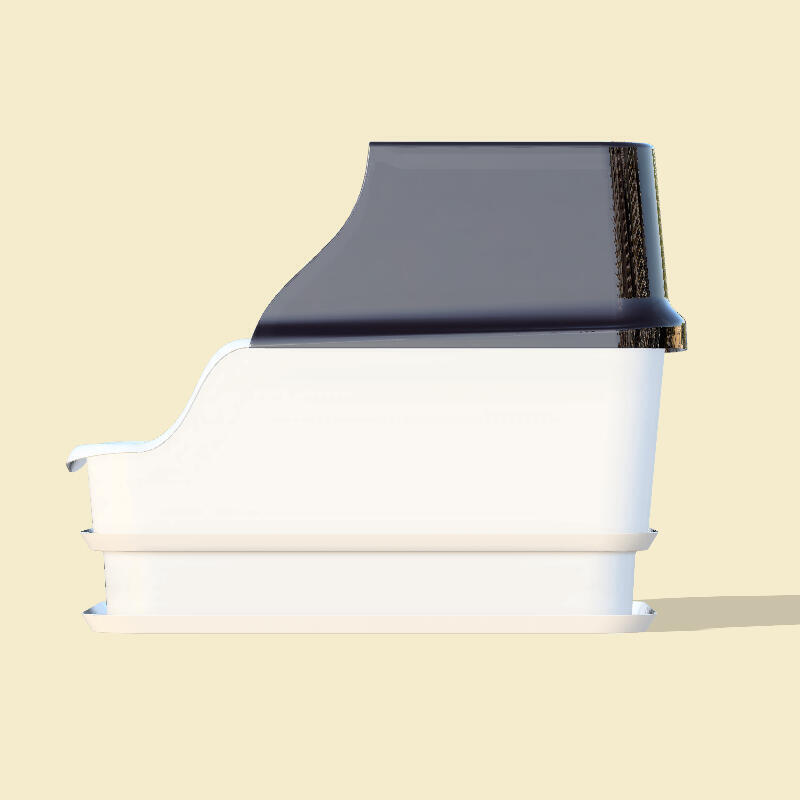
DoubleDecker XL
Sifting litter box for wood pellets + hood
The DoubleDecker XL is 40% larger than the original DoubleDecker, making it one of the largest cat litter boxes on the market. It features higher sides and a transparent hood for added privacy. Dimensions: 25" x 18" x 21".
- Out of stock
- After using this litter box, share a testimonial on any public forum to receive a 10% refund.
DoubleDecker XL Plus
Sifting litter box for wood pellets + hood + stainless steel solid insert
This version of the DoubleDecker XL includes an extra removable solid insert made of 312 stainless steel, that can be securely attached to the sifter pan with 10 bolts. This insert allows the DoubleDecker XL to be effectively converted for use with regular clay litter. The stainless steel bottom is scratch-resistant, corrosion-resistant, and has excellent odor-repellent properties.
- Very limited stock.
- After using this litter box, share a testimonial on any public forum to receive a 10% refund.*
Besides being much larger in size, the XL version features sides that are 1.5 inches higher. The entrance is only raised slightly (0.5 cm) to accommodate cats who cannot jump as high. The storage pan is nearly double the size of the original Doubledecker’s, so it can potentially hold much more sawdust—enough to last up to four weeks for one cat.* This litter box is huge. Please make sure you have enough space for it.
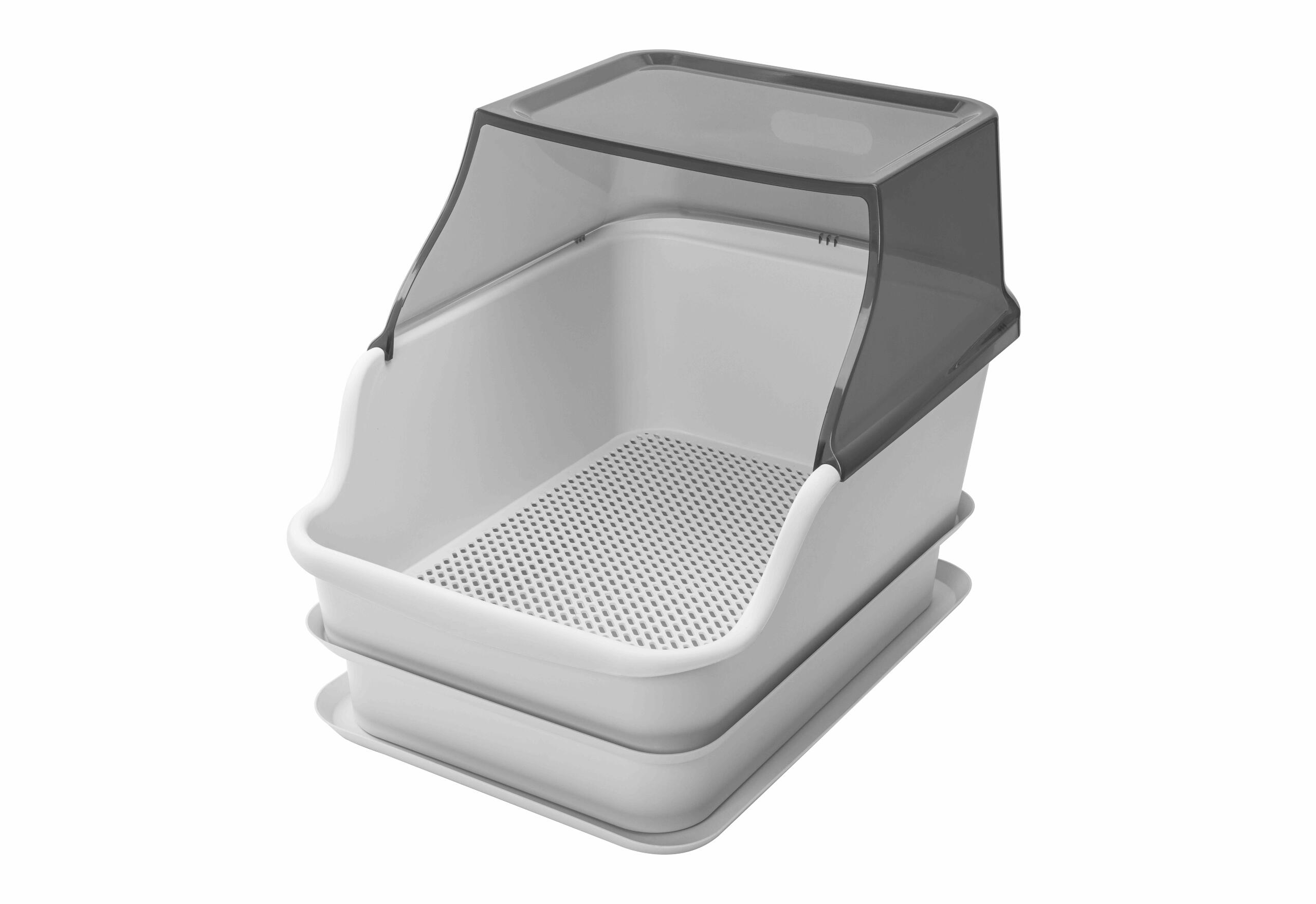
REVIEWS---Zane – Reviewed on February 19, 2025
Hi, I’m planning on buying the double decker litter box. Do you guys recommend any specific liners? I can’t find a close fit to the box size. Thanks!---Carla Medina – Reviewed on February 27, 2025
Hi! I’d like to be updated on the upcoming cybercat box. I’m also very excited to receive my XL double decker!! Ty!!---Colin – Reviewed on March 7, 2025
Hey there, just bought the XL and am excited to have it! Do you have a reccomendation for which pine pellet littler to use with it? I am new to the pine pellet game, and I'm not sure which works best with yours, or just works best in general.---Andrew Saghir – Reviewed on March 9, 2025
Hello Mr. Catman Team,
We've recently received our Doubledecker XL and greatly appreciate the room it offers our cat, and efficiency in cleanup it offers us. Despite this, within a few days it seemed that some aspects of the design may not be agreeable to our cat. When our cat urinates it he doesn't tend to aim for the litter (or aim at all really..) but rather paints the back wall of the litter box.This had prompted us to switch to a covered box, but many were smaller in size for our bigger kitty. So we were very excited to try the Doubledecker XL. However, within the first few uses we began to notice that urine tends to leak out of the litter box through the gap between the high-walled sides of the box and the hood.With our previous box this had not been an issue due to there being a lip between the top cover and base as well as liners (our old box was not wood pellet specific) creating a seal between this interface to prevent spillage.This raised a few questions for us regarding the Doubledecker XL we received:
- Is the hood supposed to fit more securely to the body of the litter box?
- Are there any ways to help create a better seal between the hood and litter box to prevent further spillage?As of now we are trying to find a way to cover this gap from the inside of litter box. It seems that if a small lip were added to the inside of the hood serving to cover the interface between the litter box and hood, this issue may have been avoided.We truly do like the product concept and hope to find a way in which we can sustainably continue to use it, but if unable, we may unfortunately need to find an alternative. It is our hope that this feedback helps to inform the next iteration of Mr. Catman litter boxes.Thank you very much for your time and consideration.---Andrea Nagy – Reviewed on March 18, 2025
I received the double decker xl and followed the instructions on putting a bag over the container that catches the sawdust. I understand that the sawdust will fall on top of the bag but am wondering how to remove the bag after the top is full. The sawdust isn’t going into the bag and it seems like it will be difficult to pull the bag off the container without spilling a lot of sawdust. Am I missing something?---Leakara – Reviewed on March 18, 2025
Hi, I just received the double decker XL litter box. Perfect size for my Maine coon who is only 6 months but is quickly outgrowing the regular double decker litter box. Just a question, the litter pan liners.. they do not fit the pan. Were they added to just dump out the waste into after the pan is full?---Byron Chu – Reviewed on March 20, 2025
I'm interested in the mesh filter that you have for the sifting litter box system, but used in my pine pellet XL version I bought. Is this possible? Honestly guessing I should just DIY/buy components online since I'm assuming you guys might not have something like that easily available? Just thought I'd ask.---Thomas Rollins – Reviewed on March 22, 2025
Love my double decker XL. What size are the bags that came with it? Thanks, Tom---Danielle Petrovics – Reviewed on March 27, 2025
Hello! I recently received my DoubleDecker XL Litter Box - it has been great so far. No complaints! I was just wondering what size the included bags are for when I need to buy more. :) Thanks so much!---

Mesh
Sifting litter box for traditional litter
Mr. Catman Mesh Sifting Litter Box includes a mesh layer in the traditional DoubleDecker system and it can effectively sifts out dust. This litter box is also a perfect choice if you are converting from traditional litter to wood litter. Start by gradually mixing traditional litter with wood pellets and eventually replace it completely so it contains only wood pellets (this transition period can take up to a month). From there, simply remove the mesh layer to turn the system to the classic DoubleDecker litter box and start enjoying the benefit wood litter!






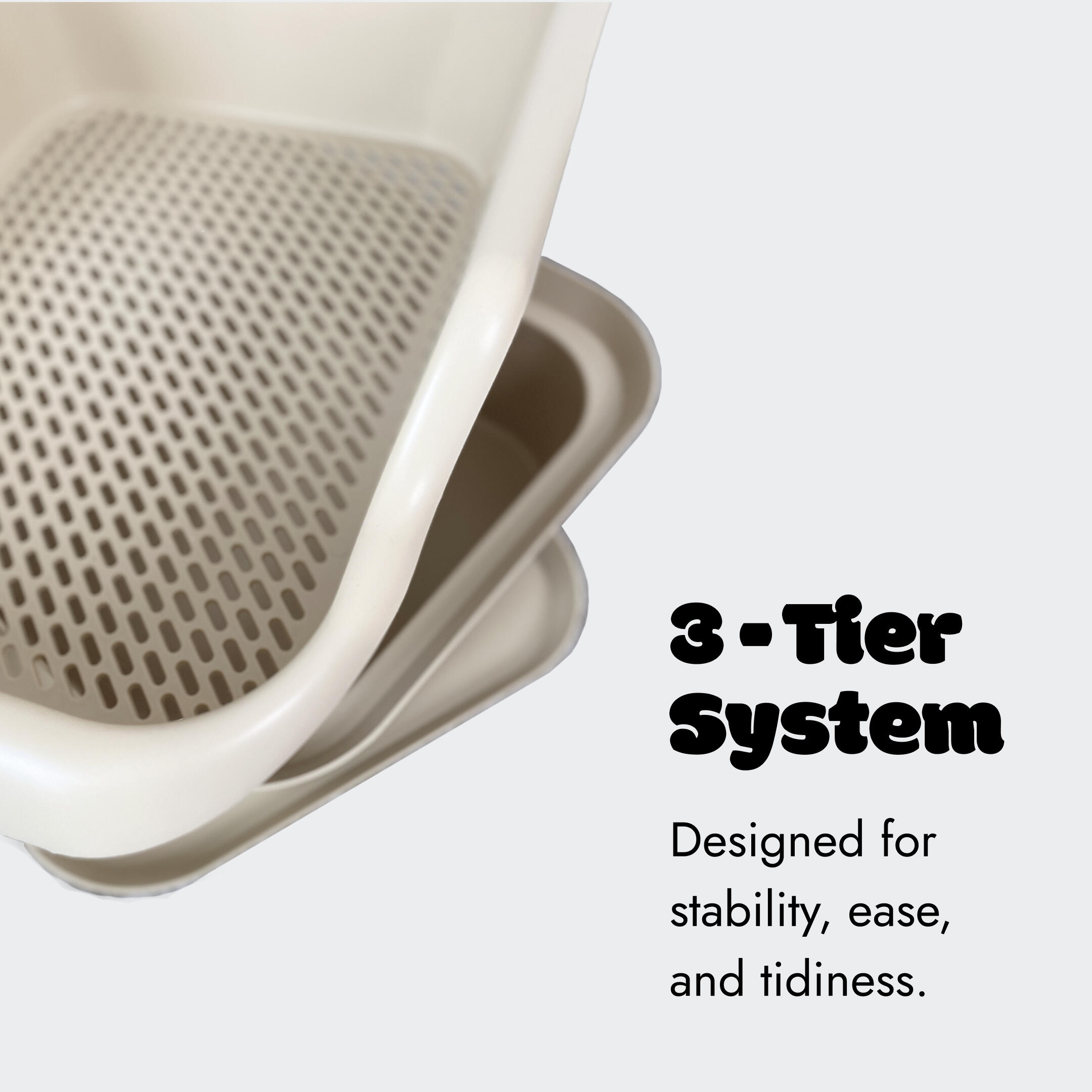
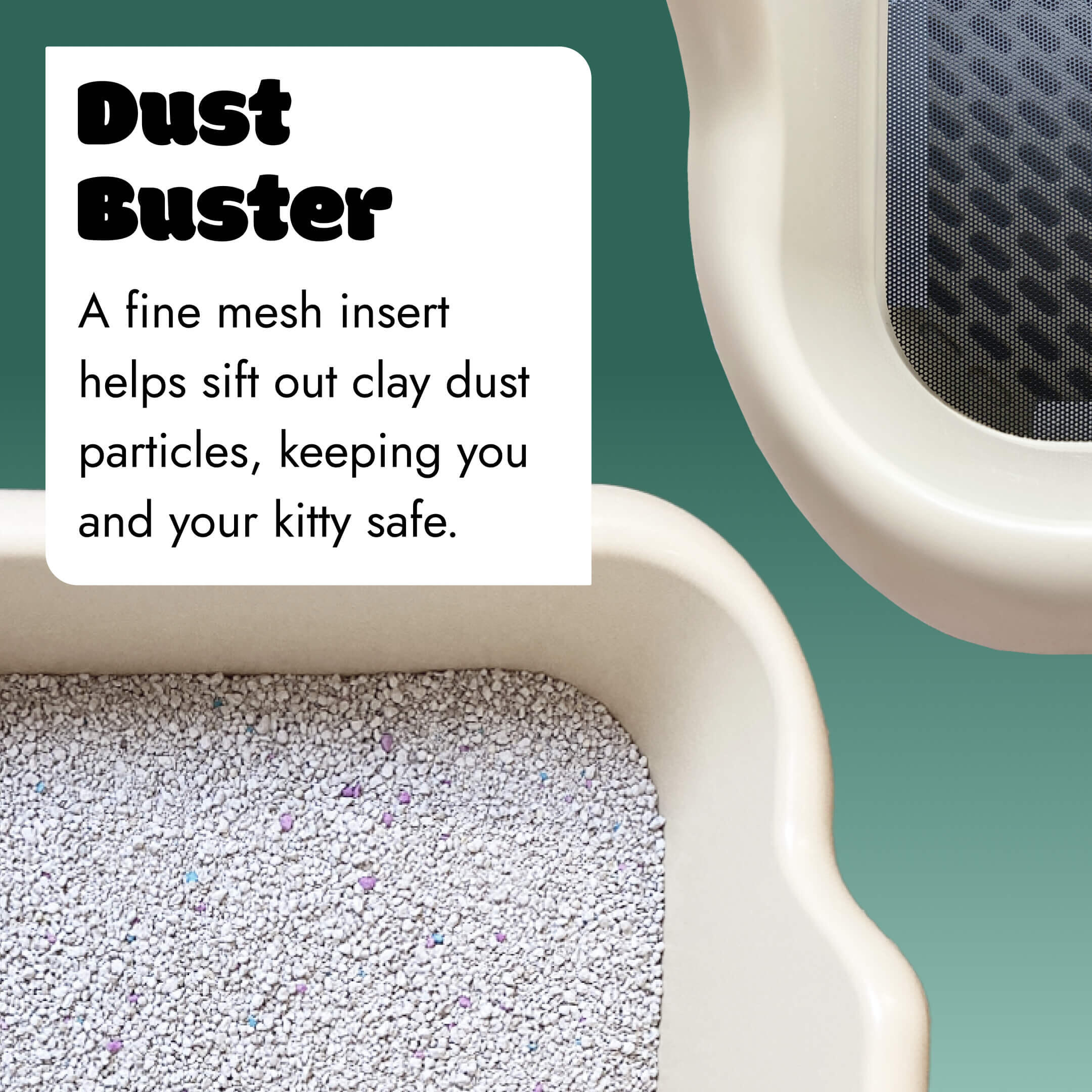
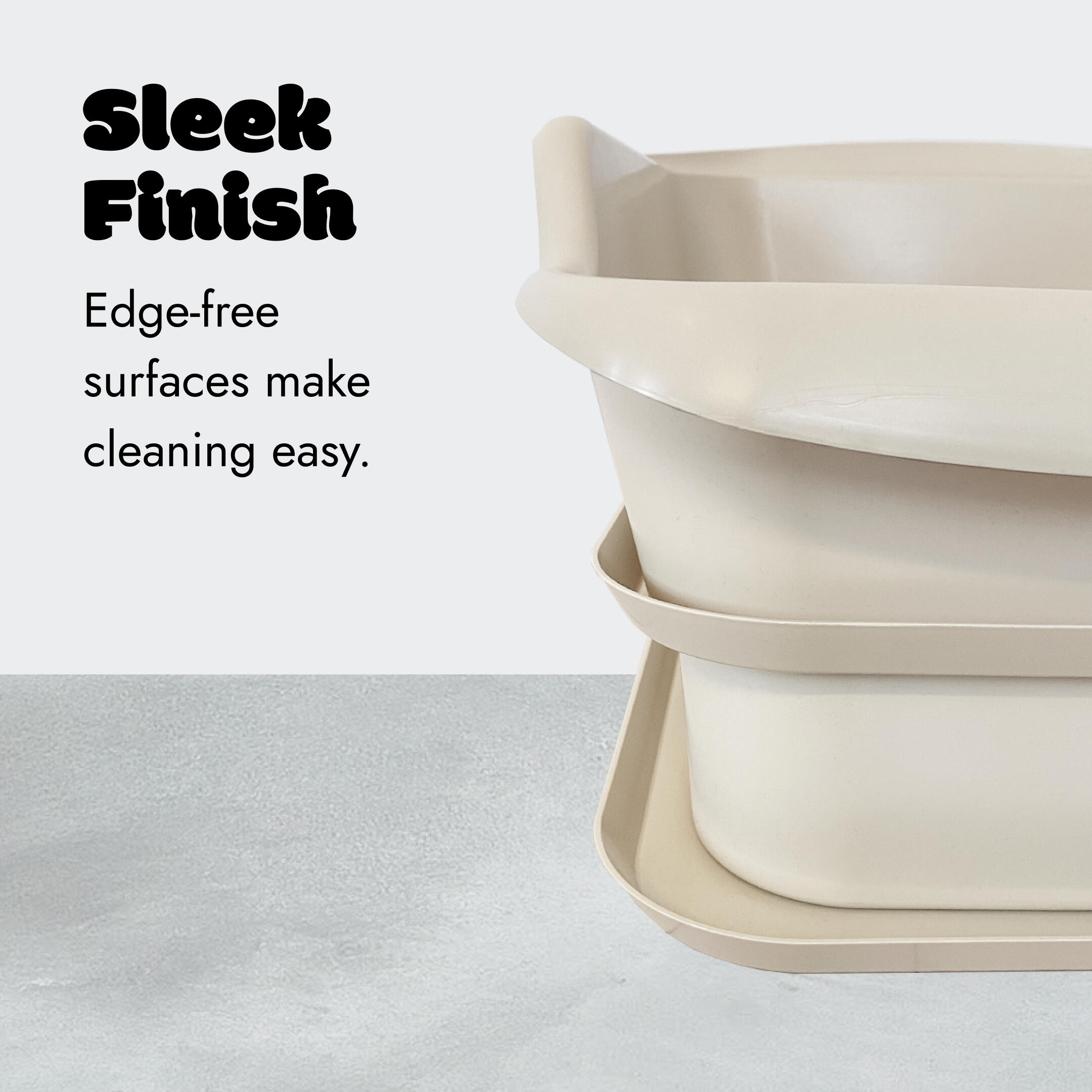
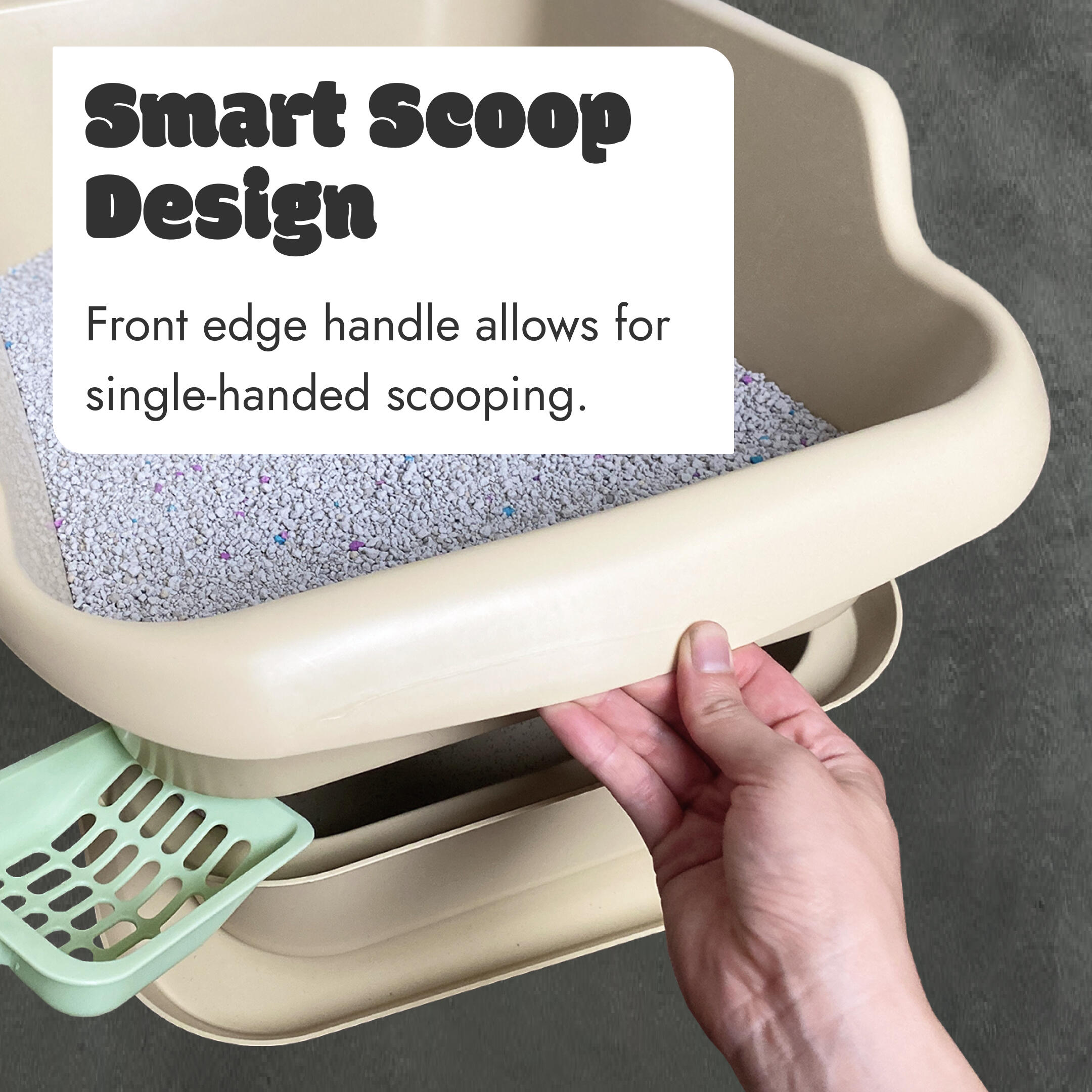

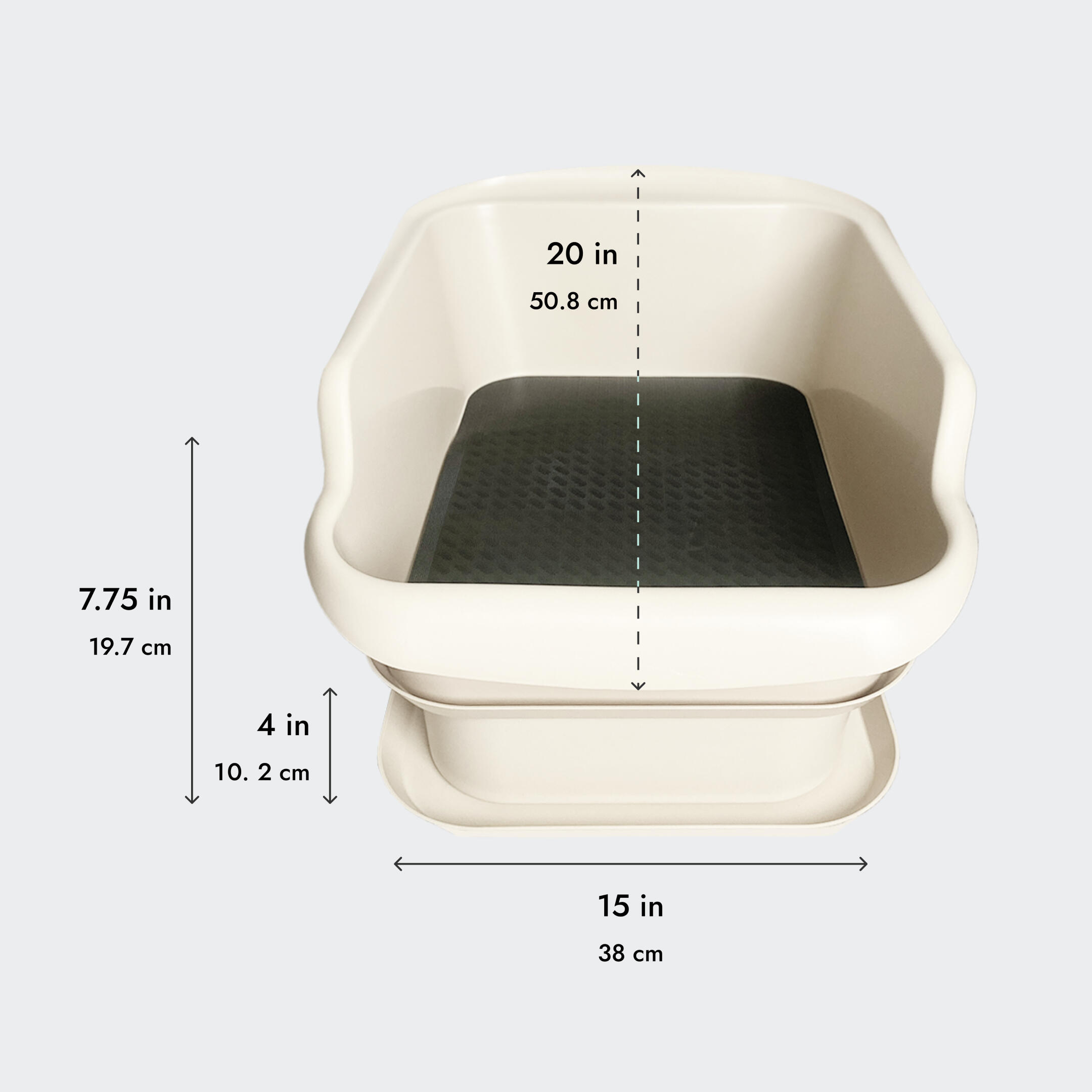
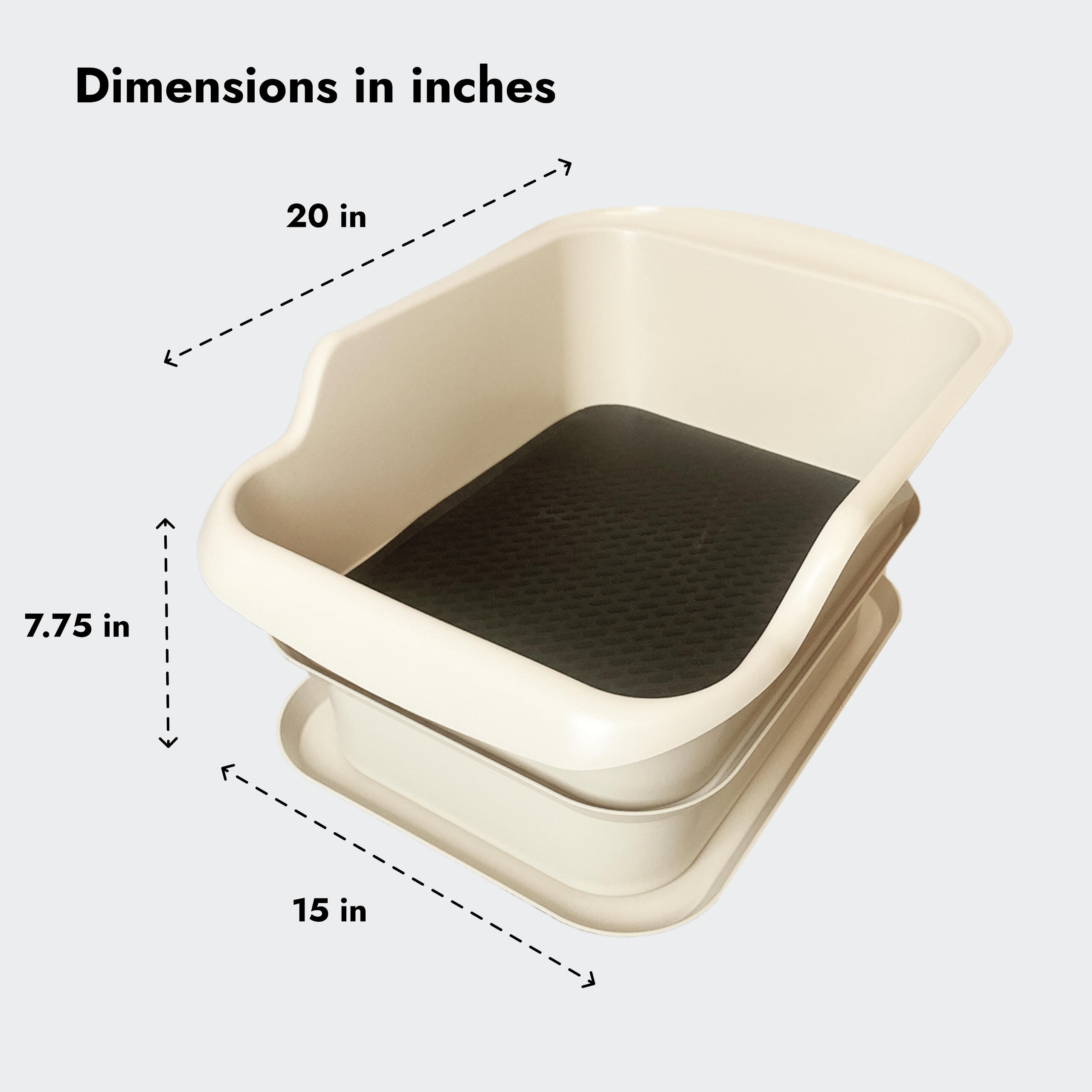
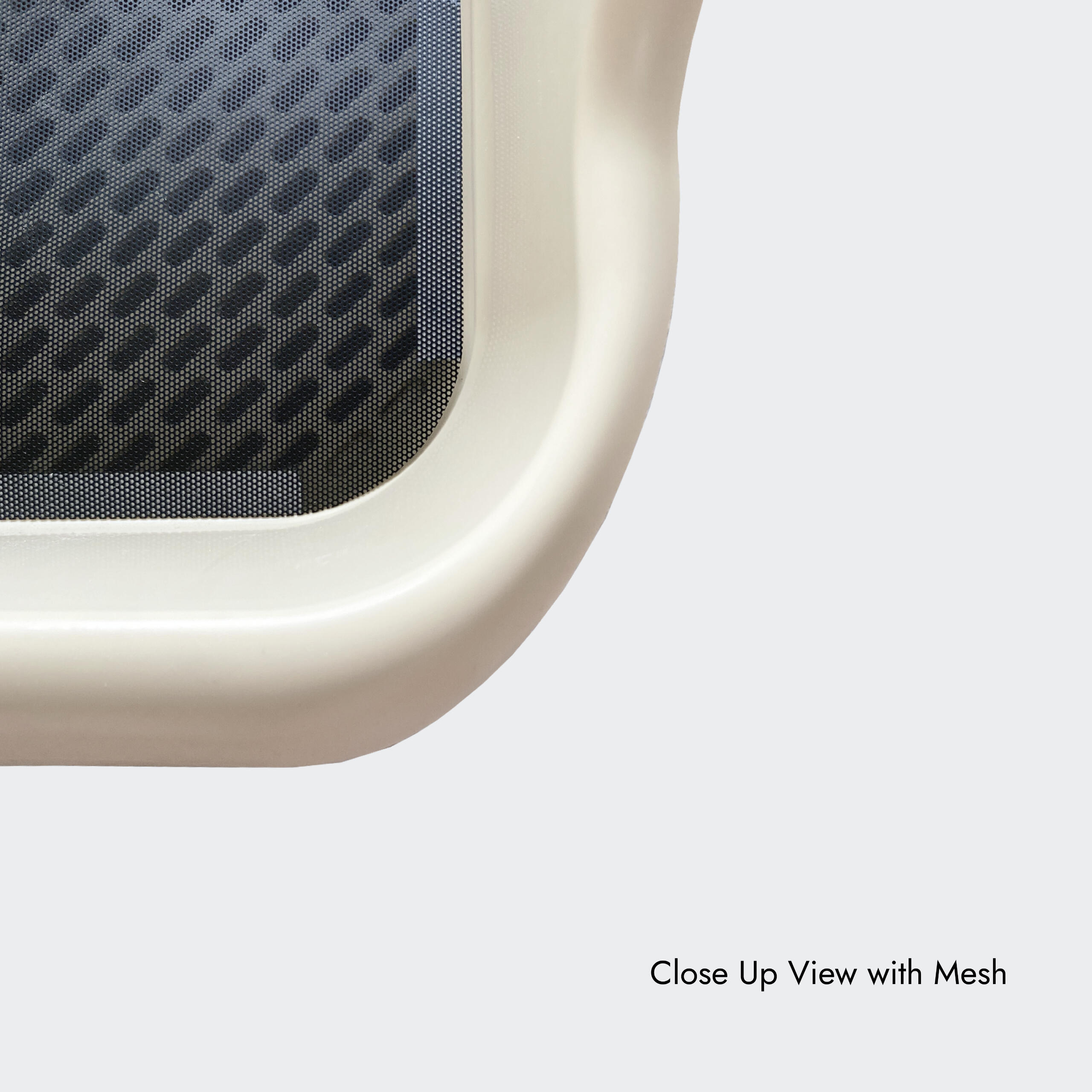
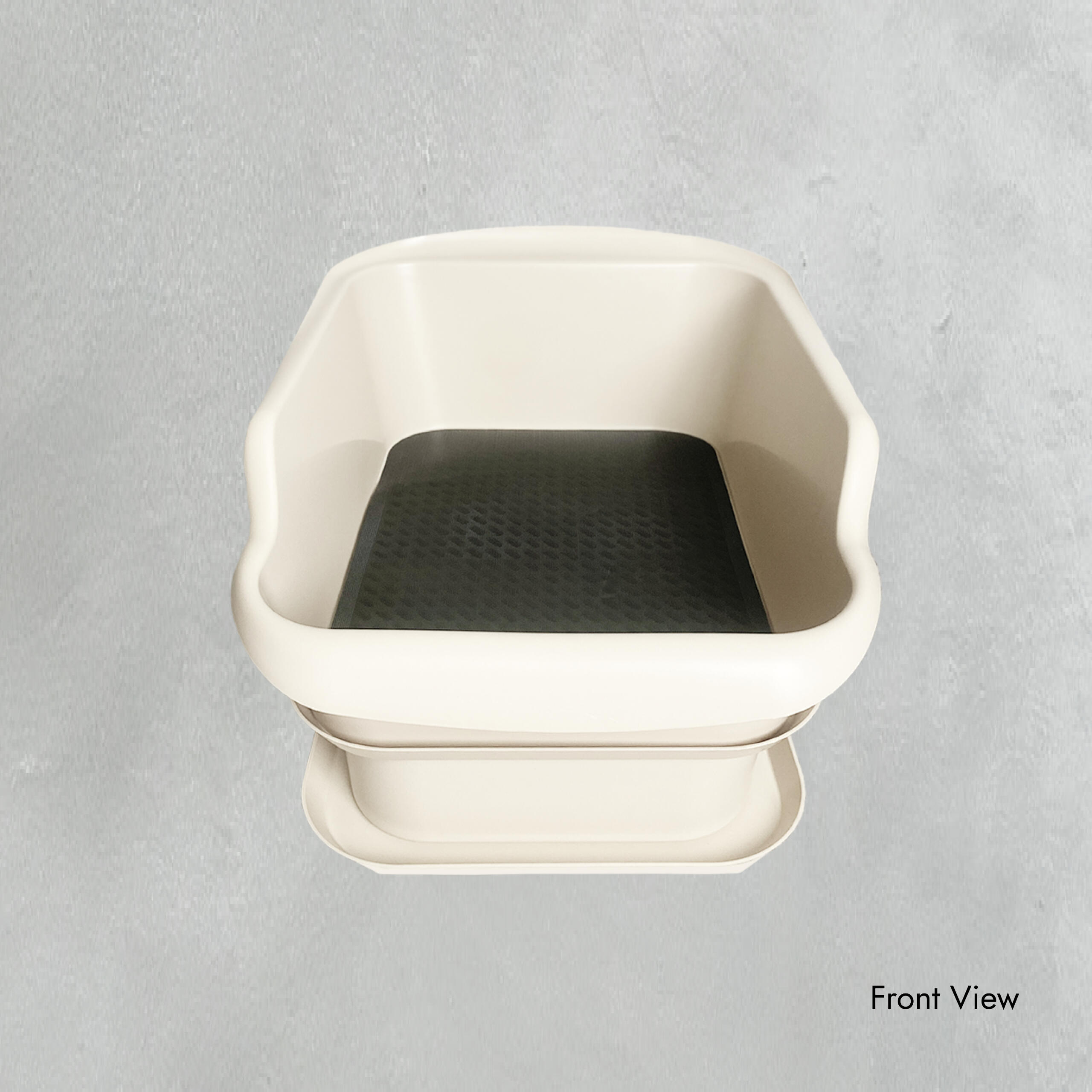
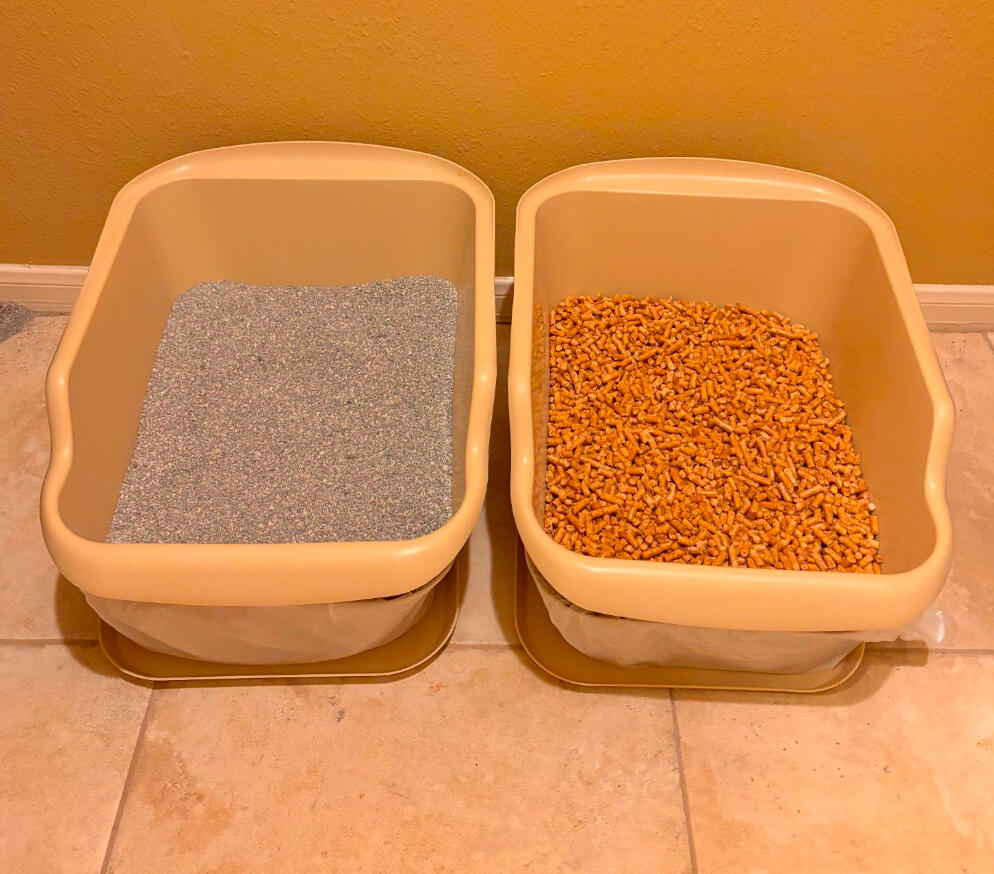
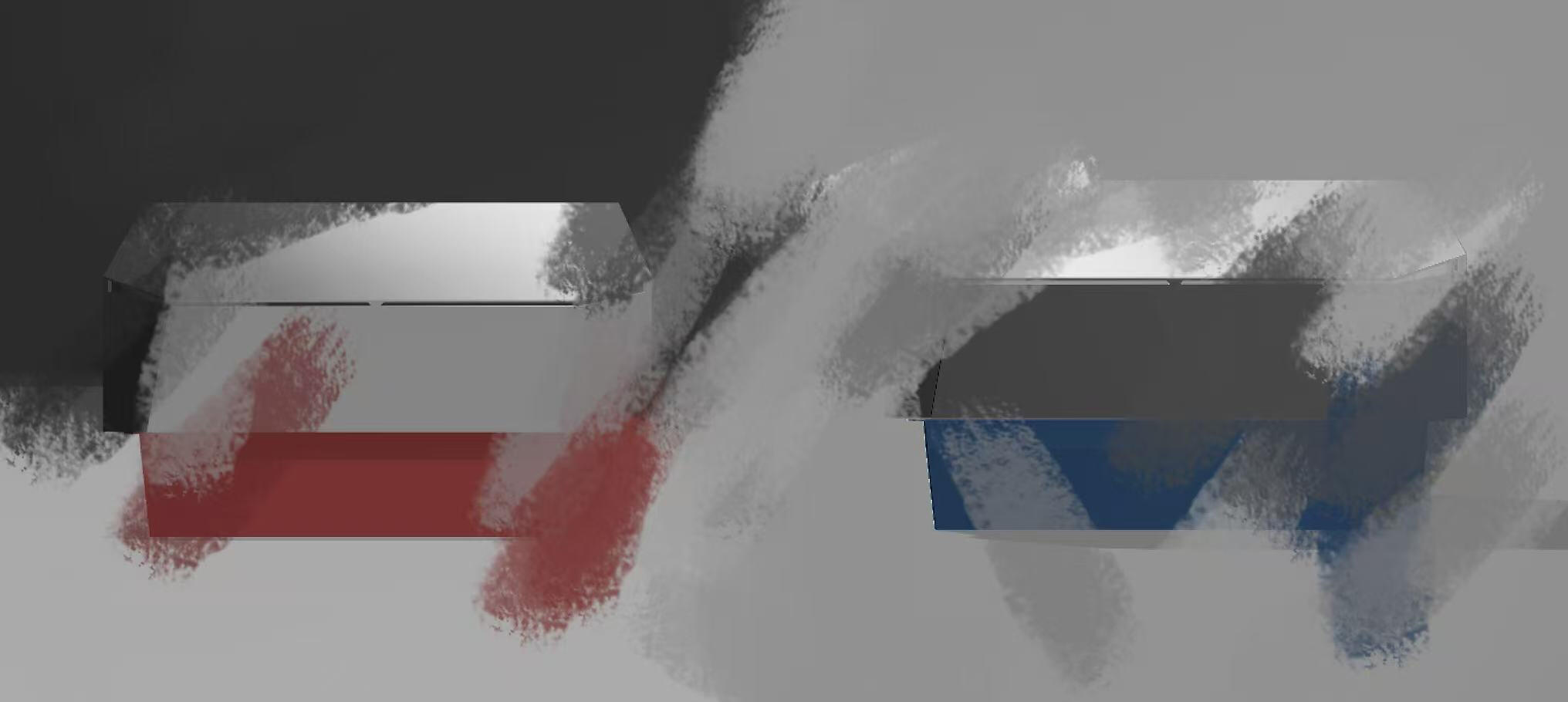
A Stainless Steel
Litter Box by Mr.Catman
We have always loved stainless steel litter boxes and wanted to create one. However, we were cautious because the sharp edges of the holes in the sifting pan could hurt cats. So, we set this idea aside for a while until we figured out a way to avoid such risks.In addition to these concerns, we also faced the choice of either simply making a stainless steel litter box that looks exactly like the DoubleDecker or creating a completely new design.We decided to go with the latter.
The new stainless steel litter box will have a fresh new look, featuring:- A stunning and unforgettable new design!
- Compatibility with ANY type of litter.Of course the new box would have all the nice features of the current DoubleDecker, that includes 2 weeks of waste storage and many more.Stay tuned—we will be launching a new presale event near the end of the month! If you want to be notified when it launches, please leave us your email at the first page of mrcatman.com.
CyberCat
Stainless Steel Litter box
CyberCat is our flagship stainless steel litter box, combining our innovative DoubleDecker technology with a stunning new design.What's included: top pan, bottom pan, sifting panel, solid panel and base panPresale pricing:- Early Bird: $149.00
- Pre-Launch : $179.00*Quantities are limited in each sales session. Estimated delivery Dec 2025. Available color: Black.
*Cancel at any time or return within 30 days for a full refund.
We have always loved stainless steel litter boxes and wanted to create one. However, we were cautious because the sharp edges of the holes in the sifting pan could potentially harm cats. So, we set this idea aside for a while until we found a way to eliminate such risks.Beyond this concern, we also had to decide whether to simply make a stainless steel litter box identical to the DoubleDecker or to design something entirely new.We chose the latter. See this post to learn how CyberCat was developed.CyberCat Stainless Steel Litter Box Features:
AN UNFORGETTABLE DESIGNPlace the litter box anywhere in your home, and it blends right in—an art piece for your feline companion.
SUPERB QUALITYCyberCat is crafted from the highest-grade stainless steel, 316 steel. It is up to four times more resistant to scratches and corrosion caused by cat urine or cleaning agents, comparing to 304 and 201 steel. Besides laser cutting and laser welding technologies, extensive effort has been made in edge finishing and surface treatment to ensure that the edges are no longer sharp for cats and hands.CyberCat also features 1.4mm-thick steel walls—the same thickness used in the Tesla Cybertruck. In other words, it's a bulletproof litter box. The litter box weights nearly 30 lbs.
| Material Grade | Examples | Feline Urine Degradation Corrosion Resistance |
|---|---|---|
| Stainless Steel 201 | Metal straws, Kitchen utensil, Food tray | ★ ☆☆☆☆ |
| Stainless Steel 304 | Pots and pans, Outdoor bbq grill | ★★★☆☆ |
| CyberCat Stainless Steel 316 | Surgical instruments, Marine applications, Swiss watches | ★★★★★ |
SAFTY FIRSTIn the deburring process, the sharp edges of the sifting holes are precisely ground off. With a thickness of 1.4mm, these edges become smooth, ensuring your cat's safety, even if they are an enthusiastic digger.
WORKS WITH PELLET LITTERCurrent CyberCat is specifically design to work with ONLY wood pellets litter. A future version that has detachable sifting or solid insert will be available at a later date. By swapping the panels, CyberCat can accommodate both wood pellet litter and traditional clay or other litter types.
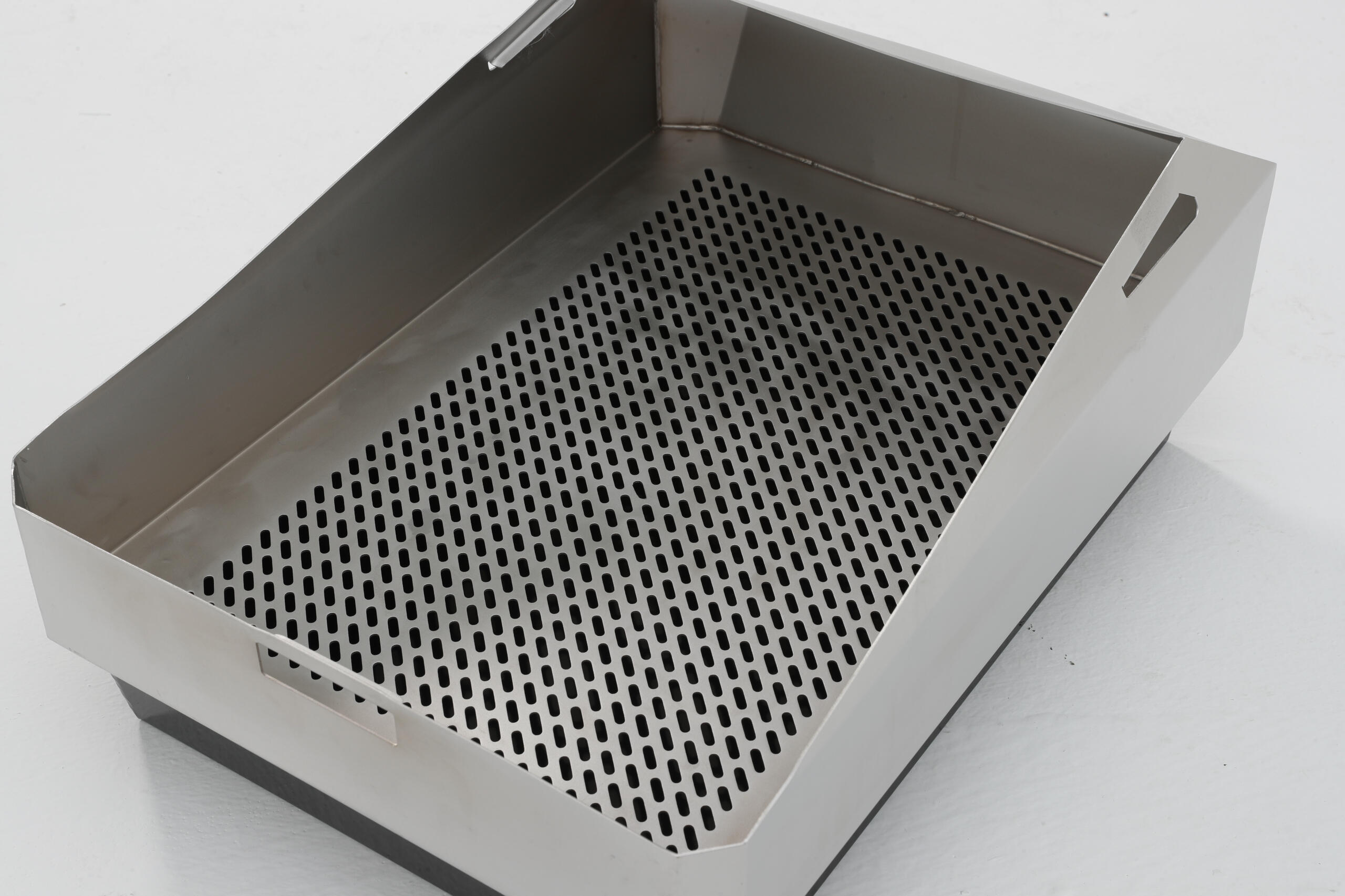
INVISIBLE BAGGING DESIGNA customized garbage bag can be discreetly tucked and hidden between the top pan and the storage pan, preserving the sleek, minimalism beauty of the CyberCat design.
Of course, CyberCat inherits all the advantages of the legacy DoubleDecker system. The large waste storage can hold up to four weeks of waste and sawdust. The anti-odor properties of stainless steel, seals in odors even more effectively for a fresher environment.
SPECIFICATIONSCyberCat is among one of the largest cat litter boxes on the market, just slightly smaller than the DoubleDecker XL.Size: 23.6 x 16.5 x 10.2 inches.
Weight: 27 lbs
Material:
Top pan: 316 stainless steel
Sifting panel: 316 stainless steel
Solid panel: 316 stainless steel
Storage pan: 316 stainless steel
Base pan (optional, not shown on images): Plastic
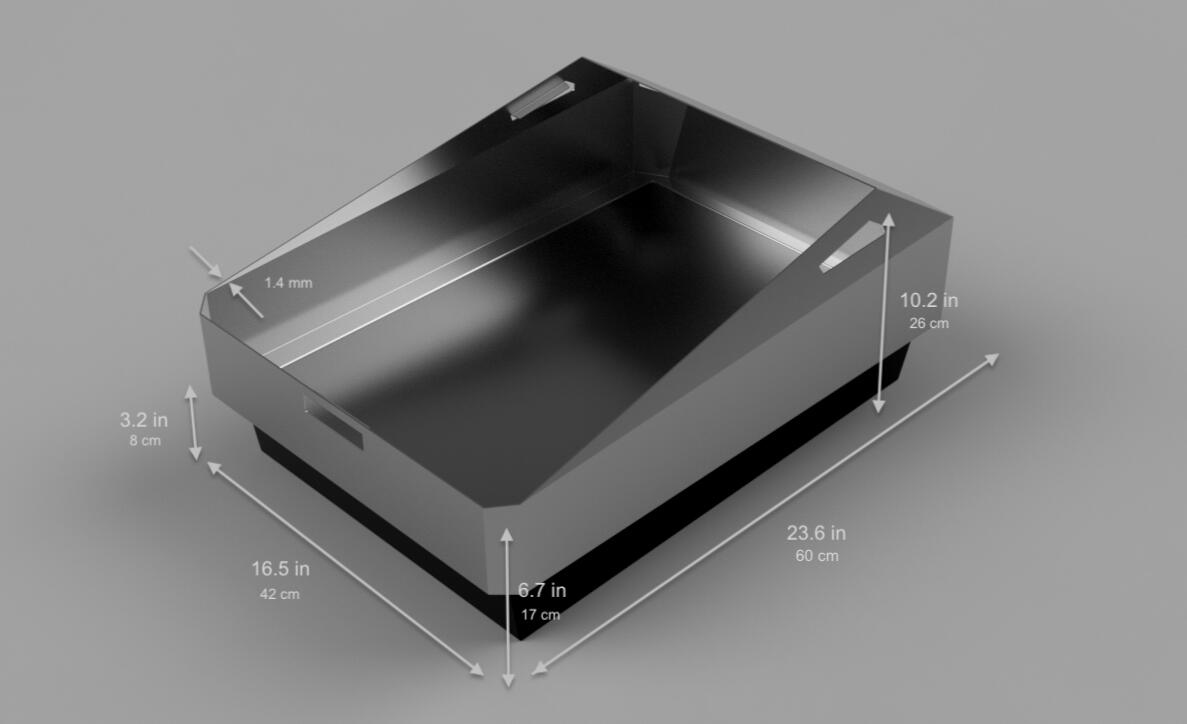
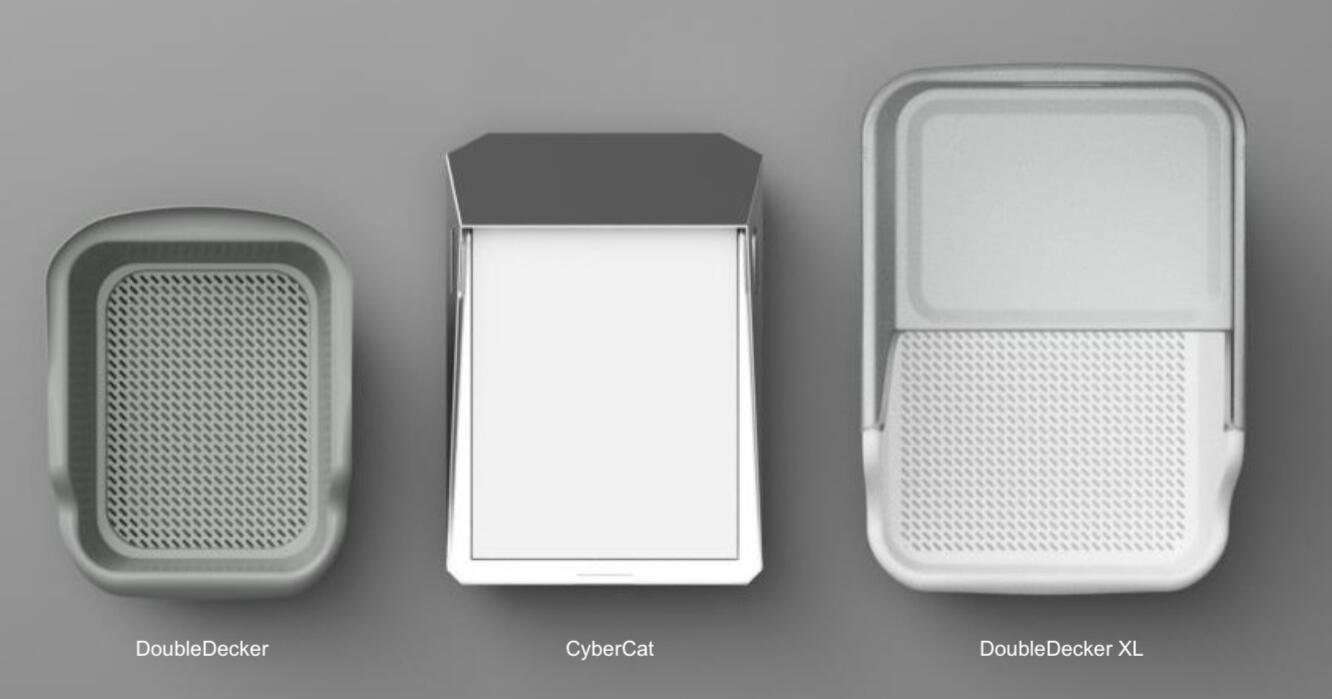
FUTURE UPGRADESFuture versions in consideration include a detachable solid/mesh insert that can enable to litter box to work with any litter type. We are also developing an LED headlamp for the CyberCat. The light will be motion-activated and capable of recording 30 seconds of video, which will be sent to your phone automatically. These upgrades are expected to be available later this year.A magnetic scoop is also in development. This scoop can attach securely to the metal wall of the CyberCat and seamlessly hide at the front of the box.
GALLERY
ACTUAL PRODUCT PHOTOS (Latest version)
ACTUAL PRODUCT PHOTOS (old version)

Capsule
Capsule shaped Kitty litter
As fans of wood pellet litters for their affordability and biodegradability, we were disappointed when our cats refused to use them—some even protested by urinating outside the litter box.After testing various solutions, we discovered that the sharp edges of traditional pellets were the issue. In response, we designed the Mr. Catman Capsule Wood Pellet Litter. Its rounded edges and capsule-like shape are gentle on cats' paws, providing a more comfortable experience while preserving all the benefits of traditional wood pellet litter.
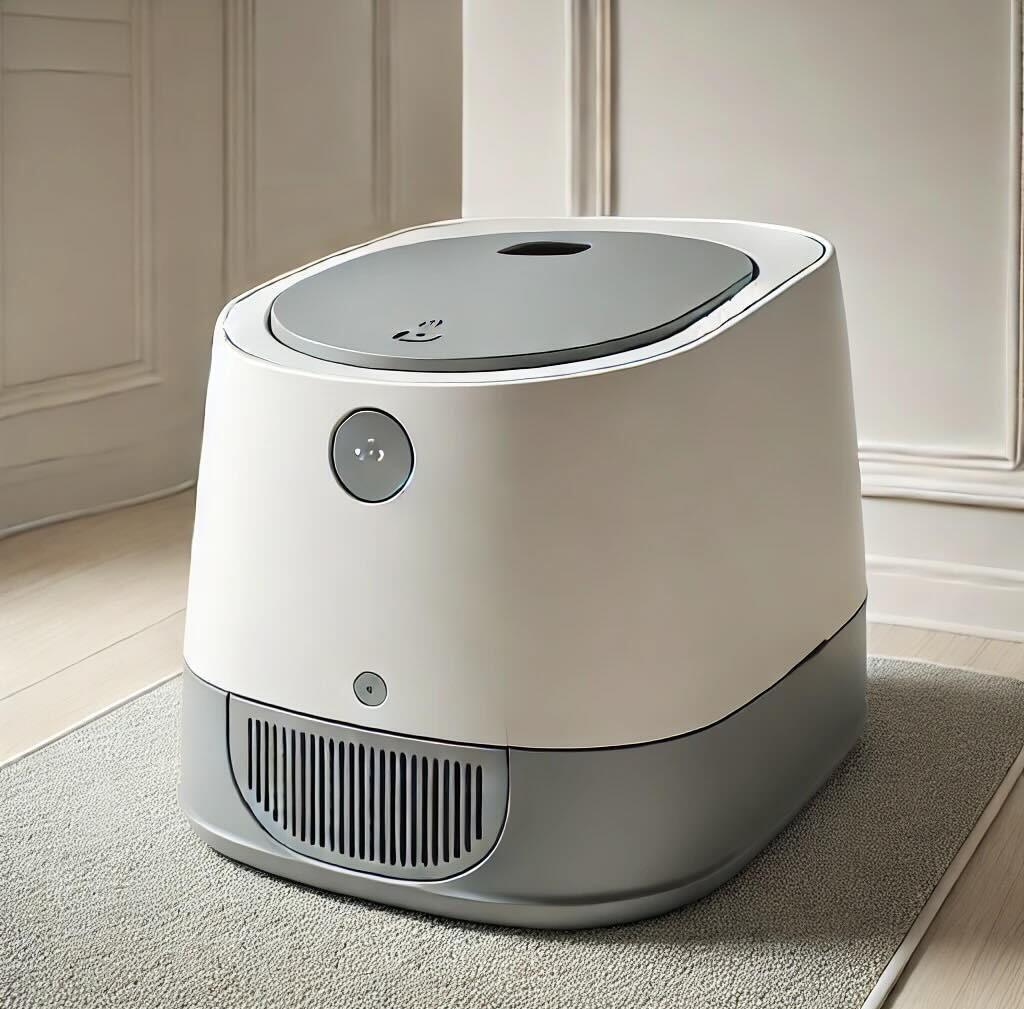
Catbot
Automatic Litter Cleaning Bot for Wood Pellets
Introducing CatBot, the world’s first litter-cleaning robot and a revolutionary device for cat owners. CatBot is the only automatic litter box specifically designed to work with wood litter.
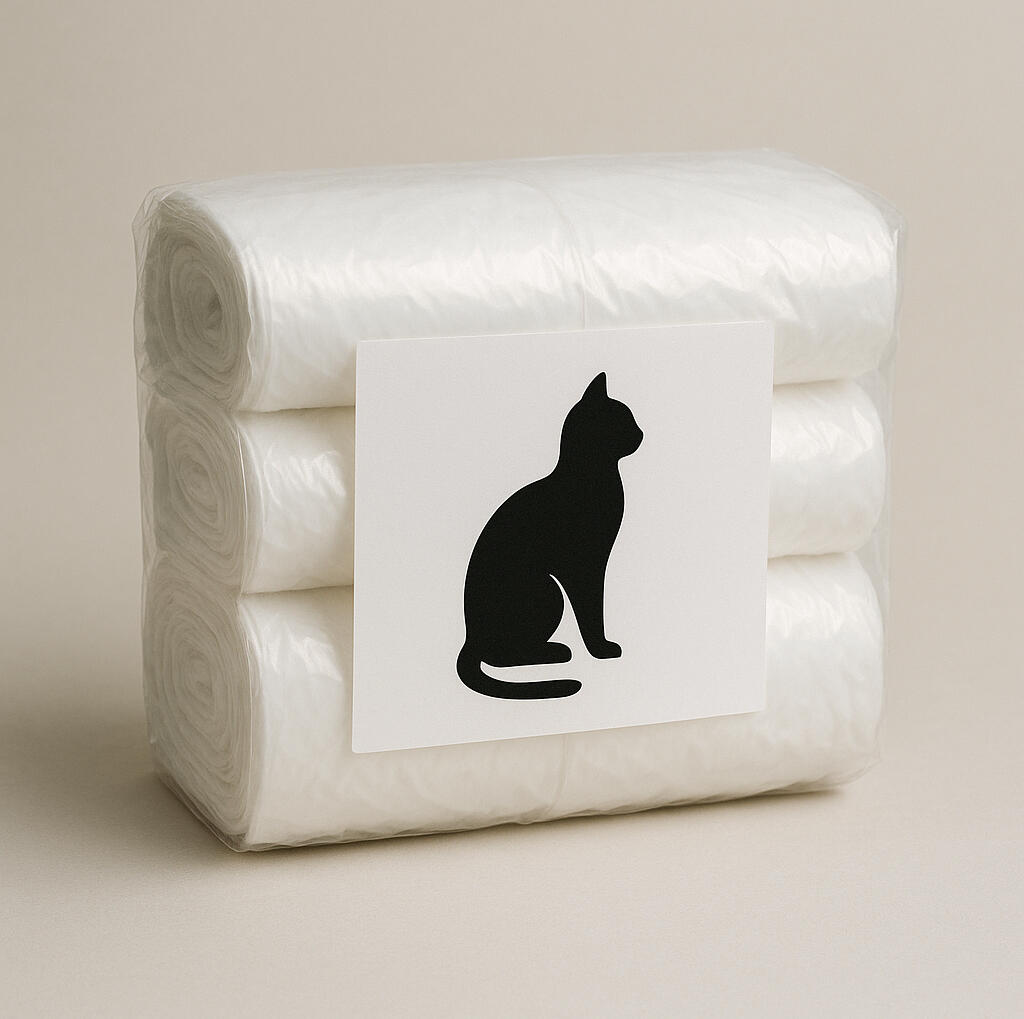
Waste bag for Mr.Catman DoubleDecker XL
$69.99
These eco-friendly white waste bags are specially designed to fit the Mr. Catman DoubleDecker XL. Measuring approximately 33 x 25 inches, they provide a snug, leak-resistant fit for the storage pan. Made from biodegradable materials, they offer an environmentally responsible solution without compromising performance. Each package contains 70 bags—enough for up to 12 months of regular use.* Delivery in 2-5 days (U.S. only)
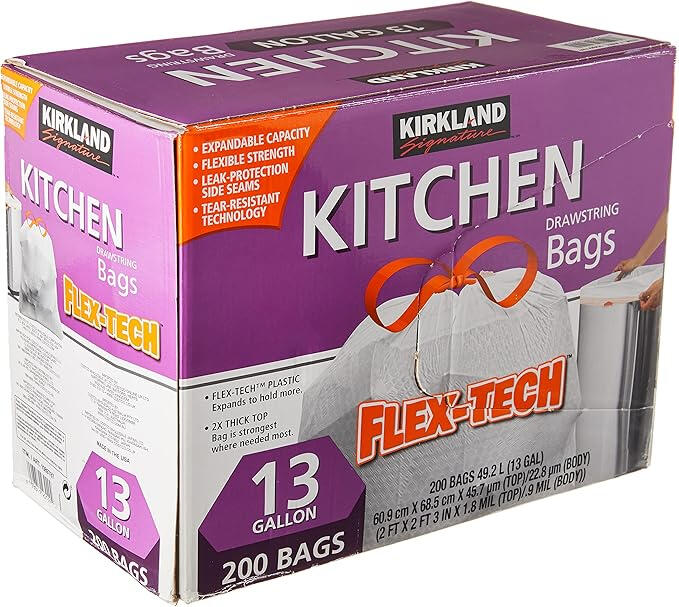
Kirkland Signature Flex-Tech 13-Gallon Kitchen Trash Bags
$29.99
The Kirkland Branded 13 Gallon trash bag is recommended because it fits Mr.Catman DoubleDecker's storage pan perfectly.
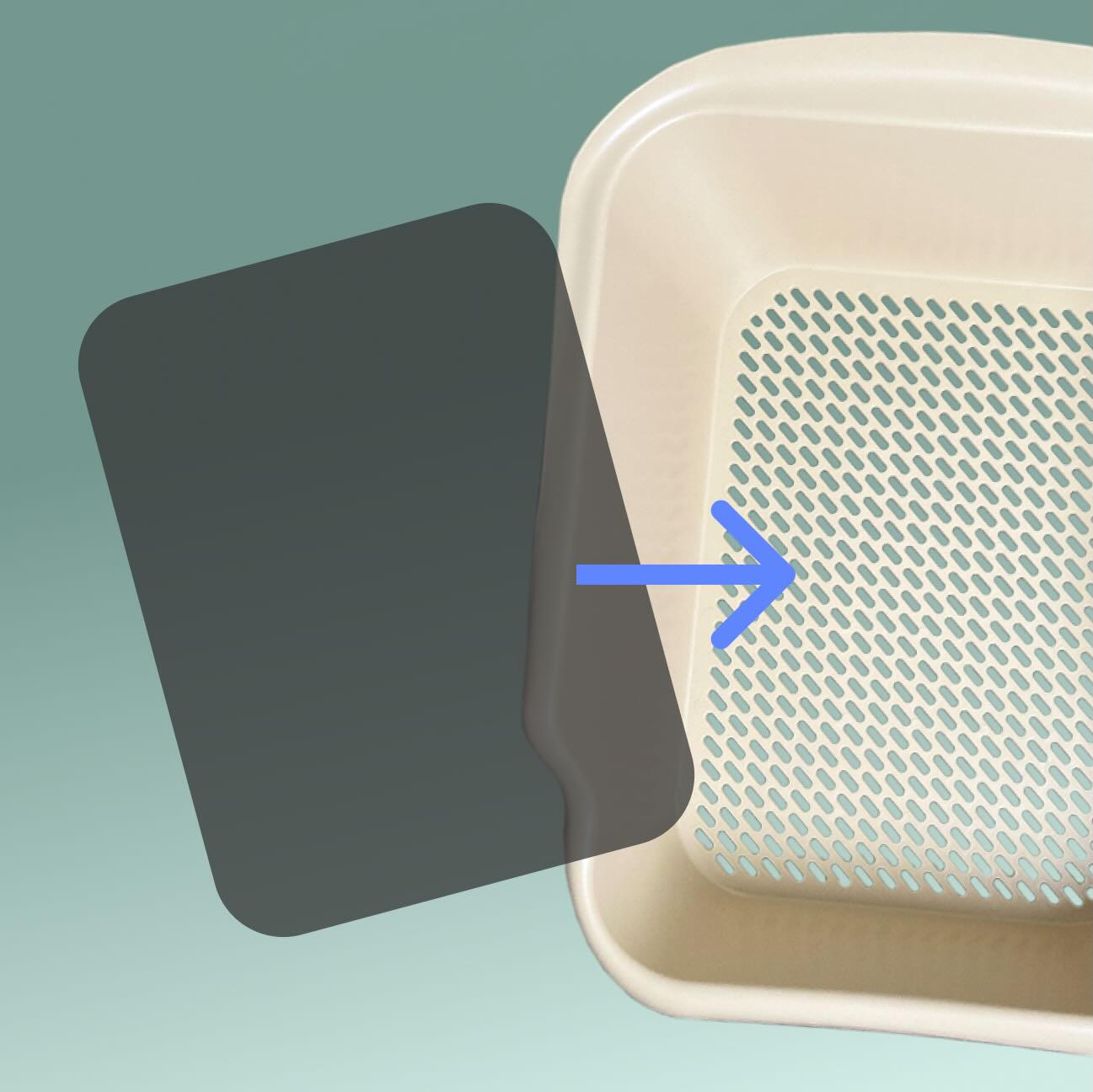
Mesh Inserts
2 Pack $9.99
Use these mesh inserts to transition from traditional clay litter to wood litter. They are made of durable, hard plastic and feature fine slots with a diameter of 0.5 mm that effectively filter out dust from clay litter. These inserts are intended for temporary use. Once your cat is accustomed to wood litter, remove the mesh inserts.* Delivery in 2-5 days (U.S. only)
We are hiring!
Please email: mrcatman2023@gmail.com



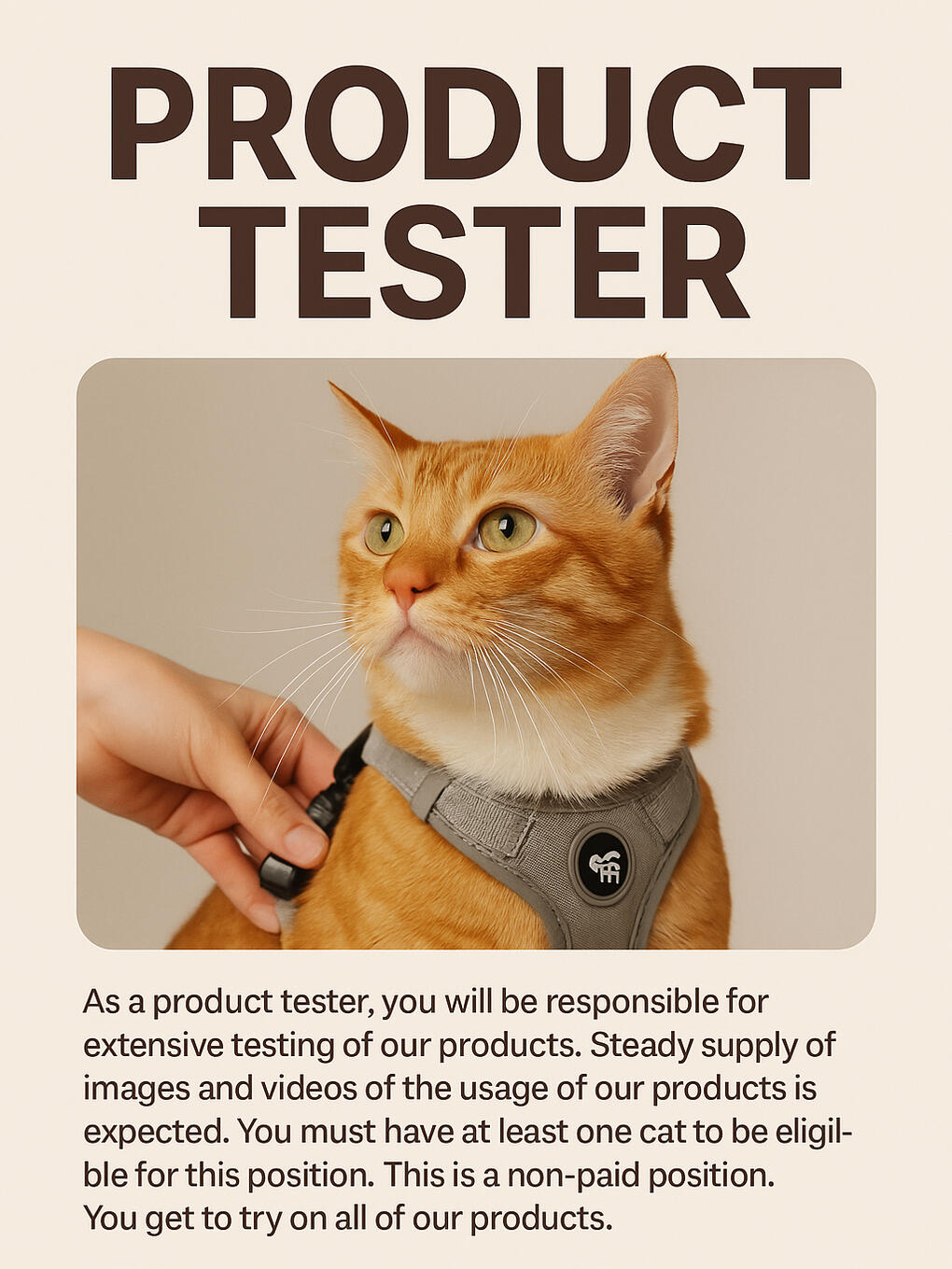
Excluding the CyberCat, post a video of any product purchased on our website and get up to 50% off your purchase price.* For one video, get 10% off; for two videos, get 20% off; and so on, up to 50% off.* Valid for new purchases made on or after 4/7/2025 only.* Videos should be posted on your social media. High-quality videos may be rewarded with additional perks!Please email the link to your video to: mrcatman2023@gmail.comRefunds for the promotional amount will be credited back to your account within 3 days after we receive your video link.
A Stainless Steel Litter Box By Mr.Catman
Feb 17, 2025
(Oct 6, 2025) – Production Update.
Early feedback from testers suggests the Cybercat is “way too heavy,” at over 30 pounds. It’s also about one inch shorter than intended. To address these issues, we’re moving manufacturing back to Houston, TX, and will produce the Cybercat locally. We’re updating the design this week—raising the height by one inch and switching materials, likely to galvanized aluminum. We’ll keep you posted as soon as the new prototype is ready.We apologize for the delay in shipping and thank you for your patience and support.
(July 27, 2025) – Design Update.
The new prototypes came back looking good (front headlight strip got bent during shipping but it will be fixed in production), so we will move forward with production. Approximately 300 units of the Signature version will be available at launch. Estimated delivery: Oct 2025. Reserve yours as early as possible if you want to receive it in the first batch.
(June 9, 2025) – Design Update.
After putting our litter box through real-world testing, we discovered that the interchangeable insert design creates more problems than it solves. Fine dust particles tend to collect in the gap between the insert and the box frame, making cleanup more cumbersome than anticipated. To simplify maintenance and improve user experience, we’ve decided to eliminate the insert altogether. New prototypes without the insert design are currently in production and will undergo testing over the next few weeks. We look forward to sharing updates soon!
(4/20/2025) The prototype has been completed and it looks good.
We will start sample batch production soon.
(3/22/2025) The storage pan electrolysis process was tested again.
Welding scares still need more work!
(3/6/2025) The second batch of prototypes is out.
The surface finish (electrolysis process) looks okay. Next, we'll work on removing the welding scars.
(3/1/2025) CyberCat Presale has started!
We have confirmed the final design with our manufacture partners and a testing batch of products are being made. We expect the delivery will start around June to July.
(2/17/2025) CyberCat Presale will start soon.
Stay tuned. We will launch a presale of a stainless litter box around the end of Febury.
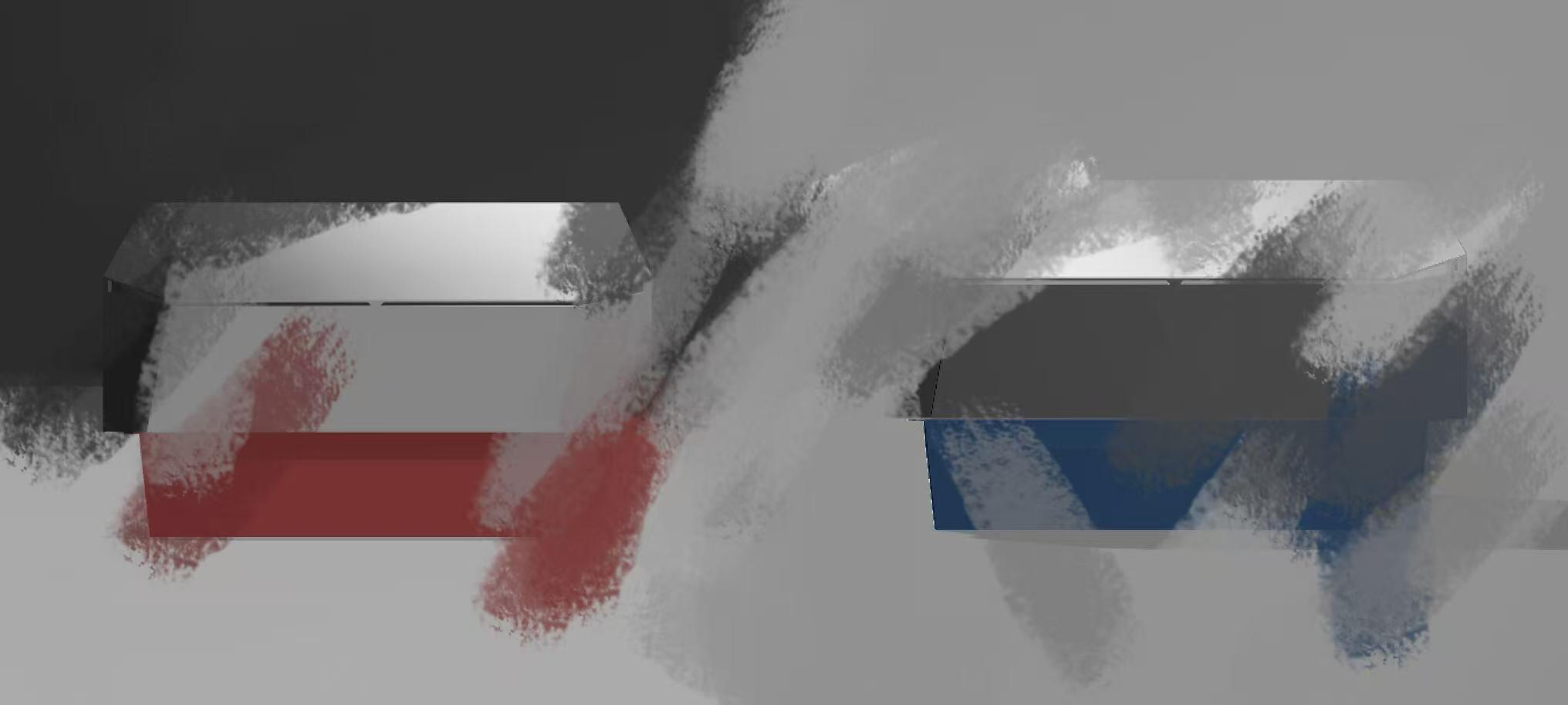
We have always loved stainless steel litter boxes and wanted to create one. However, we were cautious because the sharp edges of the holes in the sifting pan could hurt cats. So, we set this idea aside for a while until we figured out a way to avoid such risks.In addition to these concerns, we also faced the choice of either simply making a stainless steel litter box that looks exactly like the DoubleDecker or creating a completely new design.We decided to go with the latter. This blog post documents what we went through during the design process.For the past a few months, considerable effort has been invested in creating CyberCat. We've revised the design a dozen times and built numerous prototypes before arriving at the final design.
The new stainless steel litter box will have a fresh new look, featuring:- A stunning and unforgettable new design!
- Compatibility with ANY type of litter.Of course the new box would have all the nice features of the current DoubleDecker, that includes 2-4 weeks of waste storage and many more.Stay tuned—we will be launching a new presale event near the end of the month! If you want to be notified when it launches, please lead us your email at the first page of mrcatman.com.
Status of development of the DoubleDecker XL
Feb 20, 2025
(3/4/2025) All presale packages are being shipped out!
(3/1/2025) Shipping has begun!
We expect to send tracking numbers to most customers in the United States within the next week. Customers in the UK and Canada may experience slightly longer delivery times. Thank you for your patience!
(2/20/2025) The first batch of Doubledecker XL litter boxes has arrived at the Long Beach port!
Over the next 3–4 days, we will transport the container to our warehouse in Ontario, CA. Shipping will begin immediately afterward.
(2/1/2025) The first batch of Doubledecker XL products is estimated to arrive at the U.S. Long Beach port around February 19.
We will promptly ship them to our presale customers as soon as they arrive at our warehouse in Ontario, CA. Local customers are welcome to pick up their orders in person.
Quantities are extremely limited. The order page will close once all reserved quantities are sold out.
(1/18/2025) Doubledecker XL first batch of products have shipped out!
Quantities are extremely limited. The order page will close once all reserved quantities are sold out.
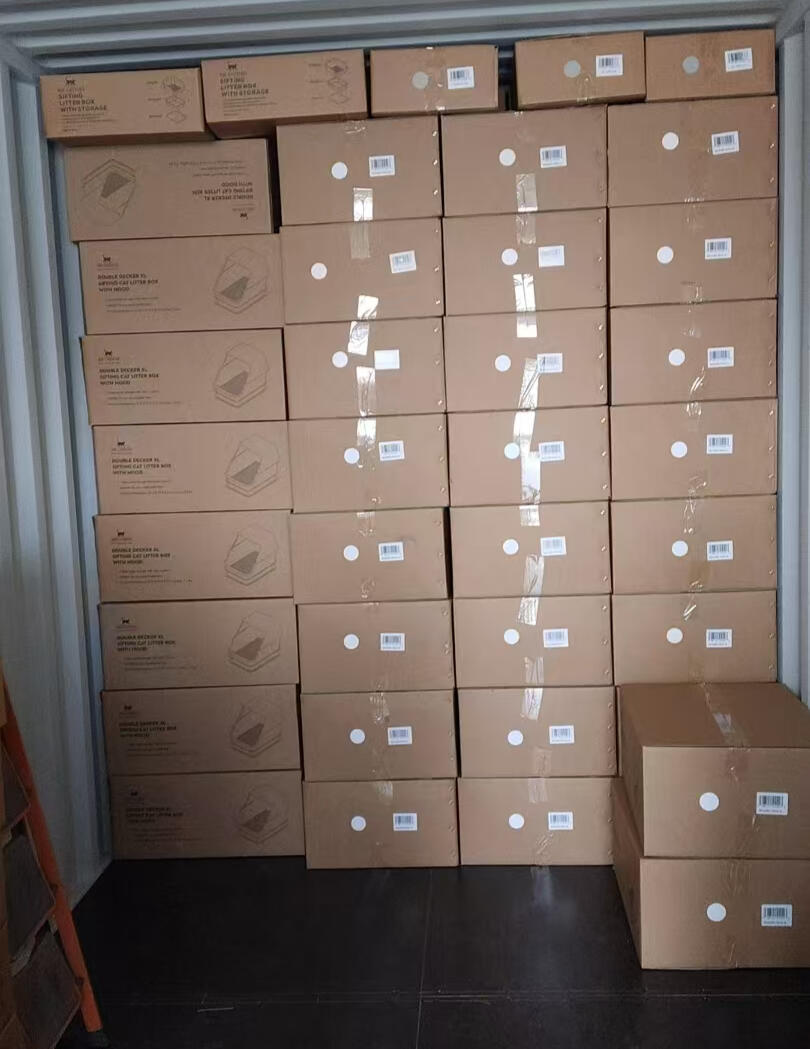
(1/5/2025) Doubledecker XL production has begun!Please note the following dates:- First batch production completion: 1/18/2025
- Estimated arrival in California warehouse: 2/15/2025
- Estimated delivery to customers: 2/20/2025The default color for the XL model will be Muji Grey.
If you would prefer Muji White, please contact us with your order information.

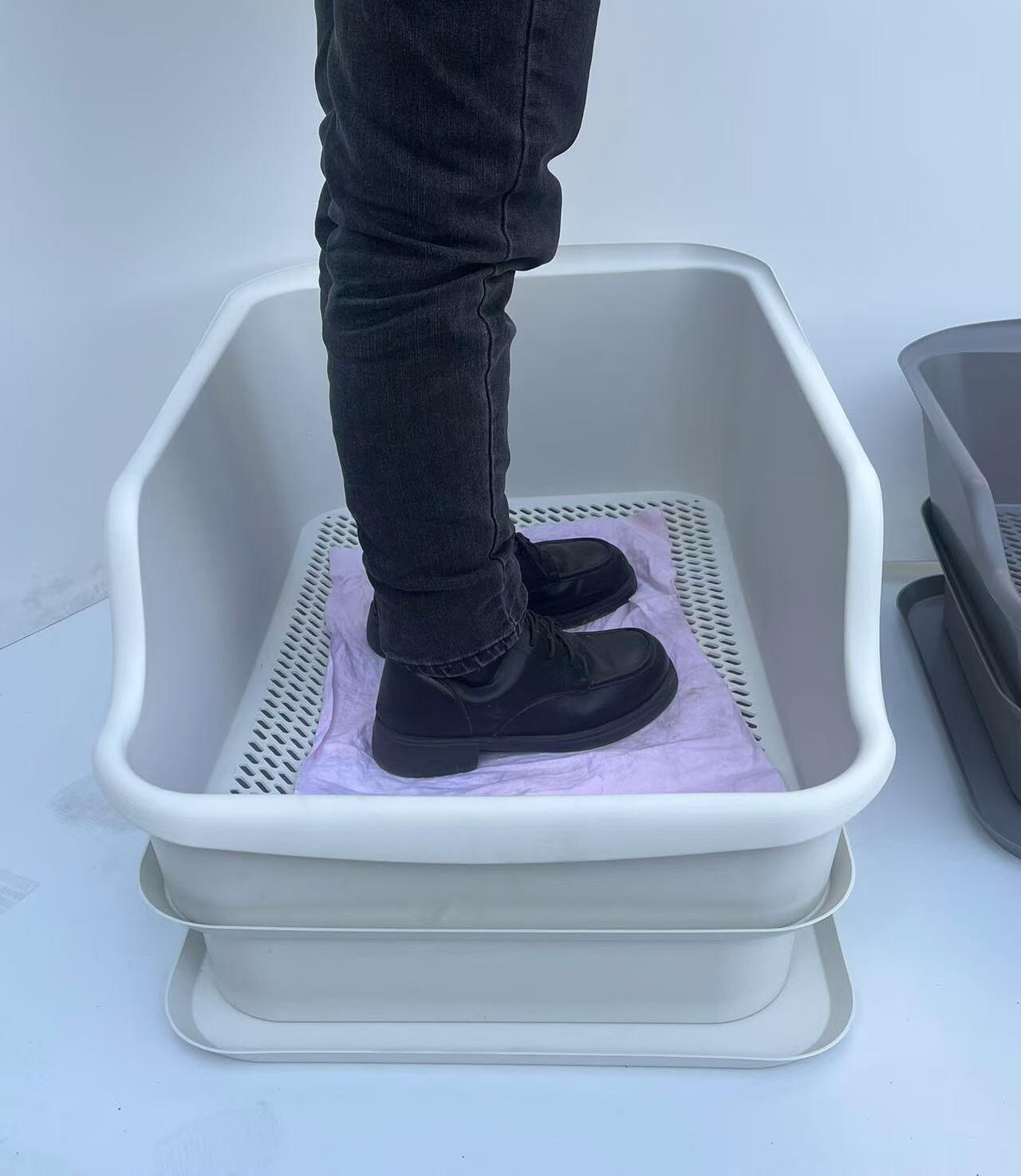
(12/8/2024) We apologize for the recent silence. As a small team, we've been fully occupied with working hard to get the DoubleDecker XL produced as quickly as possible. Just yesterday, we finally submitted the design for mold making. If all goes according to plan, the mold will be ready in 45 days, and we expect to see the first batch of production in late November.

The DoubleDecker XL is going to be huge—in fact, I believe it will be the biggest litter box on the market! Here are some photos of the same cat in both the regular and XL DoubleDecker.
The DoubleDecker XL will come with a hood, which is still in stealth development mode, so I can’t reveal all the features just yet. However, I believe it will surprise you, and it’s going to look really cool. Here’s a little hint: the hood will be WiFi-enabled, and there will be a Mr. Catman app! While not all features will be available at launch, they will be gradually incorporated, making the hood just as essential as the litter box itself. Unlike a typical hooded litter box, you won’t need to remove the hood to clean up after your cat.
The DoubleDecker XL will come in two new colors: Dark Grey and White Grey. These will be the exact shades you'll find on MUJI's plastic bins. You can check out those products to see the actual colors in person.
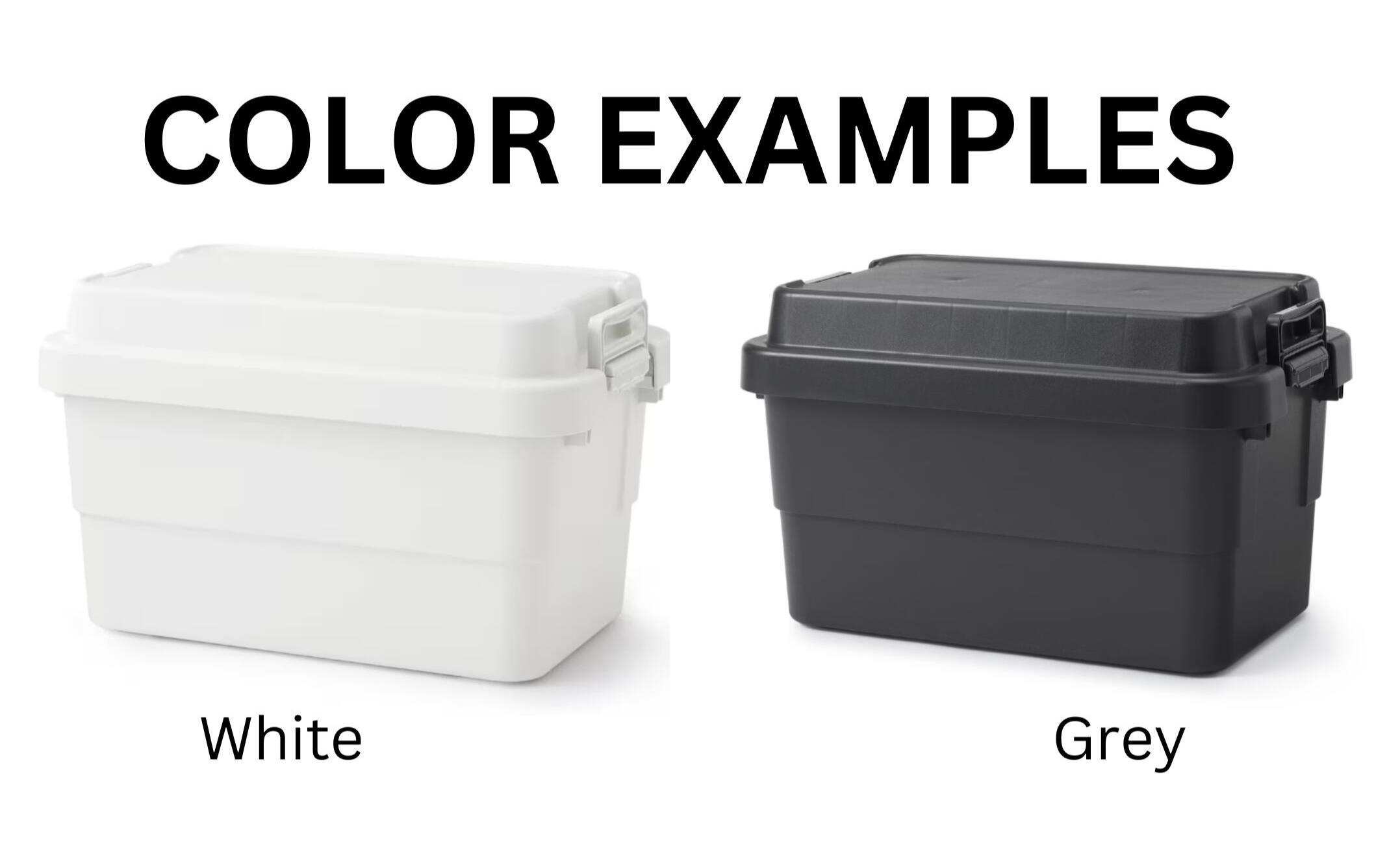
Factory have just sent us some new photos showing the color of production samples versus the color of Muji plastic bin. They are still fine tuning some details to make sure it is free of any defects. We expect the first batch of production within 2 weeks!We truly appreciate all your support! If you have any product suggestions, please feel free to leave us a comment.
The Purr-fect Choice: Unveiling the Capsule shaped pine kitty litter
May 8, 2024

Introducing our premium capsule-shaped wood litter for cats, designed to provide superior comfort and hygiene for your feline friends. Made from natural wood, our litter features uniform, smooth, rounded pellets that are gentle on paws while effectively controlling odor. The eco-friendly composition ensures a safe and sustainable choice for your pet and the environment. Experience the perfect blend of functionality and natural elegance with our capsule-shaped wood litter, the ideal solution for a cleaner, fresher home.
Natural Odor Control
Pine kitty litter is renowned for its exceptional odor-absorbing properties. Unlike clay litters that often mask odors with chemical fragrances, pine naturally neutralizes unpleasant smells. The wood fibers in pine litter effectively absorb and trap moisture, minimizing the growth of odor-causing bacteria. This results in a fresher and more pleasant environment for both cats and their owners.
Eco-Friendly Option
Sustainability is a growing concern in today’s world, and pet owners are increasingly seeking environmentally friendly alternatives. Pine kitty litter is made from renewable and biodegradable materials, typically sourced from sawmill by-products. Choosing pine litter reduces the environmental impact associated with clay mining and the production of synthetic litters, making it an eco-conscious choice for conscientious pet owners.
Dust-Free Experience
Traditional clay litters can be dusty, leading to respiratory issues for both cats and their human companions. Pine litter, on the other hand, is known for its low dust content. This is particularly beneficial for cats with respiratory sensitivities and for households where family members may suffer from allergies. The reduced dust levels also make for a cleaner and more enjoyable scooping experience.
Low tracking
Wood pellet cat litter is a game-changer for cat owners looking to reduce litter tracking around their home. Its low-tracking properties come down to its unique composition—large, smooth pellets that are less likely to stick to your cat’s paws compared to traditional clay or clumping litters. When wet, the pellets break down into sawdust, which falls into our DoubleDecker catcher box rather than spreading throughout your house.
Extreme affordability
We don’t want to advertise other brands here, but some of our users have reported that Tractor Supply offers 40-pound bags of wood pellets for as low as $6.99 per bag (that's like 3-6 months usage for one cat). The wood pellet litter from PetSmart is slightly more expensive but still much more affordable than clay or other types of litters.
Long-Lasting Performance
Pine litter tends to last longer than traditional clay litters, thanks to the highly absorbent nature of wood fibers, which require less litter for effective odor control. With the Mr. Catman DoubleDecker litter box, you can enjoy up to one full week of odor-free performance for two cats, and up to 14 days for one cat! Simply empty the catcher bin every 1–2 weeks, and your feline friend will have a fresh, clean litter box every day!
Gentle on Paws
Cats are meticulous groomers, and they often lick their paws after using the litter box. Our capsule shaped pine litter, with its rounded edges, is gentle on feline paws. This is especially advantageous for cats with sensitive skin or allergies. Make no mistake, it is extremely difficult to manufacture such capsule shaped wood pellets in high efficiency but it is absolutely necessary. We have invested a lot of effort sourcing the right pellet mill for this product and we hope you like it when it's released to the market in 2025.
The Issue of Current Cat Litter Box Products on the Market
May 28, 2024
If you're a cat parent, you know a good litter box is essential—but finding one that truly works can feel impossible. Despite a growing market of products, cat owners still face big issues, from poor designs to environmental concerns. Here’s a closer look at the most common complaints and what you should consider when choosing the best litter box for your furry friend.Design Flaws That Make Litter Boxes a Pain
Size Problems: Many litter boxes are too small, especially for larger cats or multi-cat households. Cats need room to move and dig—too small a space can lead to messes and discomfort.Accessibility Issues: High-sided boxes or narrow entries can be tough for older cats, kittens, or cats with mobility challenges. A more accessible box can make all the difference.Lack of Privacy: Cats prefer privacy, but most open litter boxes don’t offer it, which can lead to litter box avoidance. While covered boxes offer privacy, they often trap odors, which is another issue.Odor Control Failures: Many litter boxes lack proper ventilation or odor-absorbing features. Without good odor control, your home can smell less than pleasant, no matter how clean you try to keep things.Hard to Clean: Poor designs with tight corners trap waste and make cleaning harder. Non-stick materials or smooth interiors are key for easy maintenance but often missing in many models.Environmental Concerns
Non-Biodegradable Materials: Most litter boxes are made from plastic, which isn’t environmentally friendly. For cat owners who care about sustainability, options are limited.Disposable Litter Trays: While convenient, disposable trays add to landfill waste. Eco-conscious cat parents are looking for reusable options that don’t create excess trash.Health Concerns to Keep in Mind
Dust and Chemical Additives: Traditional clay litters produce dust, which can harm respiratory health. Chemical additives used for clumping or odor control can also affect air quality and be harmful if ingested by your cat.Bacterial Growth: Design flaws that trap waste encourage bacterial growth, increasing the risk of infections for cats and creating an unhealthy environment for everyone in the home.Usability Issues that Annoy Cat Owners
Complex Assembly: Some litter boxes are over-engineered, making them tricky to put together and even harder to clean. A simple, user-friendly design can make daily cleaning much easier.Ineffective Scoops: Too many litter boxes come with flimsy scoops that don’t work well. A good scoop should be sturdy, easy to handle, and designed to sift through litter efficiently.Litter Scatter: Containing litter is a challenge, especially with open-box designs. Litter scatter leads to extra cleaning and can damage floors or carpets over time.Style and Space Considerations
Unattractive Designs: Let’s face it, most litter boxes are purely functional and don’t blend well with your home decor. A few brands have focused on aesthetic appeal, but stylish options are still limited.Bulky for Small Spaces: If you live in a small apartment, finding a litter box that fits discreetly can be a real challenge. Some are simply too large and awkwardly shaped for easy placement.The Catbot!
Traditional litter boxes come with their fair share of flaws, from poor functionality to environmental and safety concerns. But the future of litter box innovation is on the horizon! Stay tuned to our blog for updates on the development of our revolutionary automatic litter box, currently code-named The Catbot. Set to launch in late 2025, The Catbot will redefine what a litter box can be, addressing these common issues with a completely redesigned approach to every aspect of its functionality and design. Get ready for a game-changer in cat care!
The Ultimate Guide to Choosing the Best Cat Litter
June 2, 2024
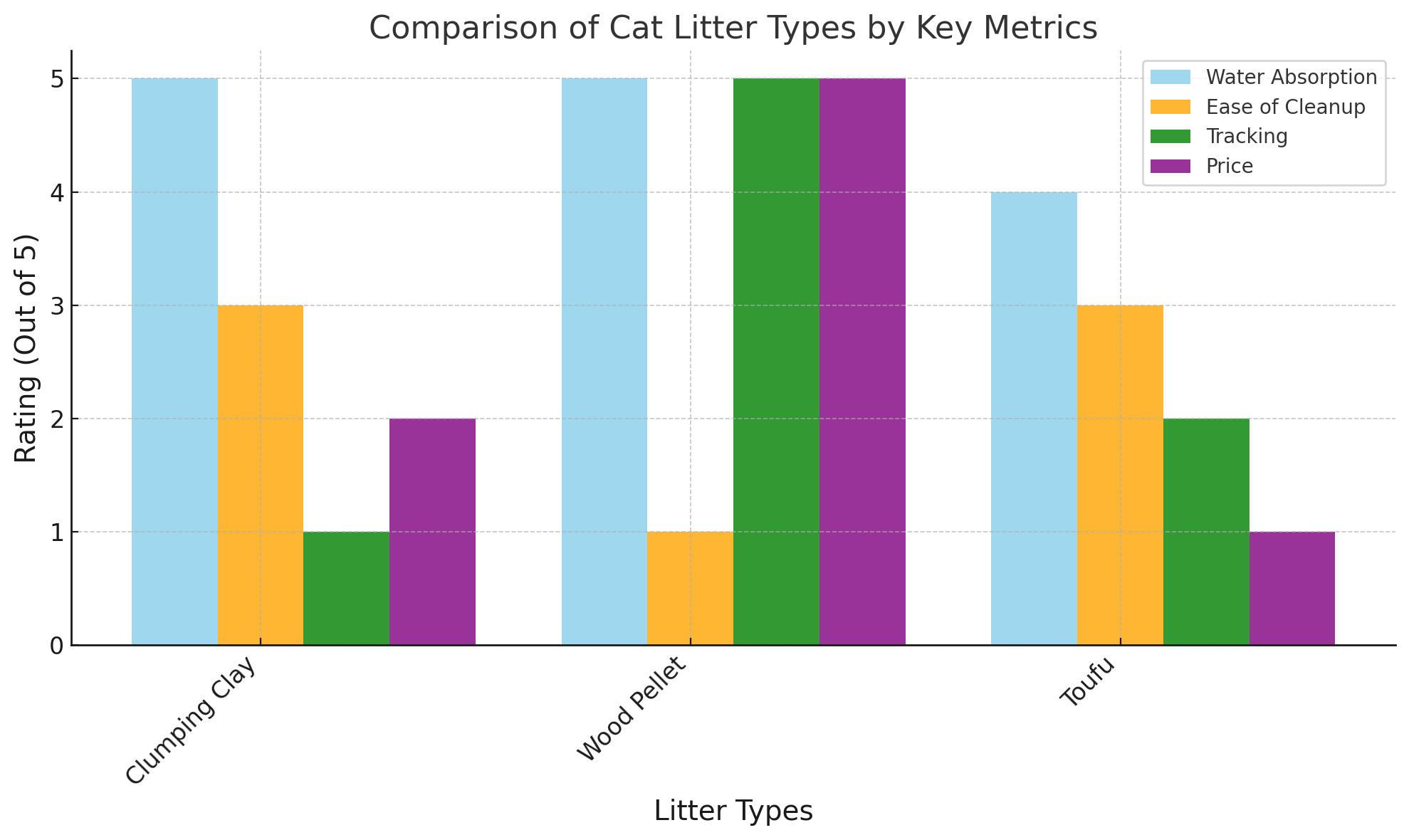
Cat litter is a must-have for any cat owner, but with so many options available, finding the right one can feel overwhelming. Each type of litter offers unique advantages and drawbacks, so understanding their differences can help you make the best choice for your feline friend. Here, we break down the most popular litter types, compare their features, and highlight their pros and cons to guide your decision.Litter Type Comparison at a GlancePopular Cat Litter Types and What You Need to Know1. Clumping Clay Litters
Forms solid clumps for easy scooping but can be dusty and heavy. Brands includes Arm & Hammer Litter Slide Multi-Cat, Purina Tidy Cats 24/7 Performance etc.2. Wood Pellet: Eco-friendly, with natural odor control. Requires special type of litter boxes like the DoubleDecker to handle the sawdust byproduct. Popular brands include: Feline Pine Original, ökocat Natural Wood Cat Litter, Small Pet Select Premium Pine Cat Litter etc. Of course there is also the most popular pine wood pellets from the Tracker Store for $6.99.3. Toufu: Biodegradable and clumps well but can attract pests and can be very sticky to the bottom of litter boxes. Toufu litter is the new trend. Although it is marketed as developed in Japan it is mostly a Chinese technology. In Japan, 95% litter is probably wood pellets. Popular brands include Tuft & Paw Really Great Cat Litter, FUKUMARU Tofu Cat Litter etc.Of course there are many other types of litters such as those made of paper, grass, walnut shells, so called crystal litters etc but they aren't very popular.Key Considerations When Choosing Cat Litter
Water Absorption: Higher absorption rates mean less frequent litter changes.
Ease of Cleaning: Clumping litters tends to be sticky to the botton of the litter box. Non-clumping litters are more difficult to clean.
Tracking: Small litters stick to paws more than the bigger ones, leading to messes outside the litter box.
Price: Premium clay litters are often more expensive. The cheapest litter type is pine wood pellets!The Conclusion
Choosing the perfect cat litter comes down to your priorities—be it ease of maintenance, cost-effectiveness, or eco-friendliness. As shown in the comparison chart, each type has its strengths and weaknesses. I personally have tried almost all types of litter and settled down with pine wood litters. With the Mr.catman DoubleDecker, maintaining wood pellet litter become so easy so it is a no brainer choice for me.
How Wood Pellet Cat Litter Works (and Why You Should Consider It)
June 2, 2024
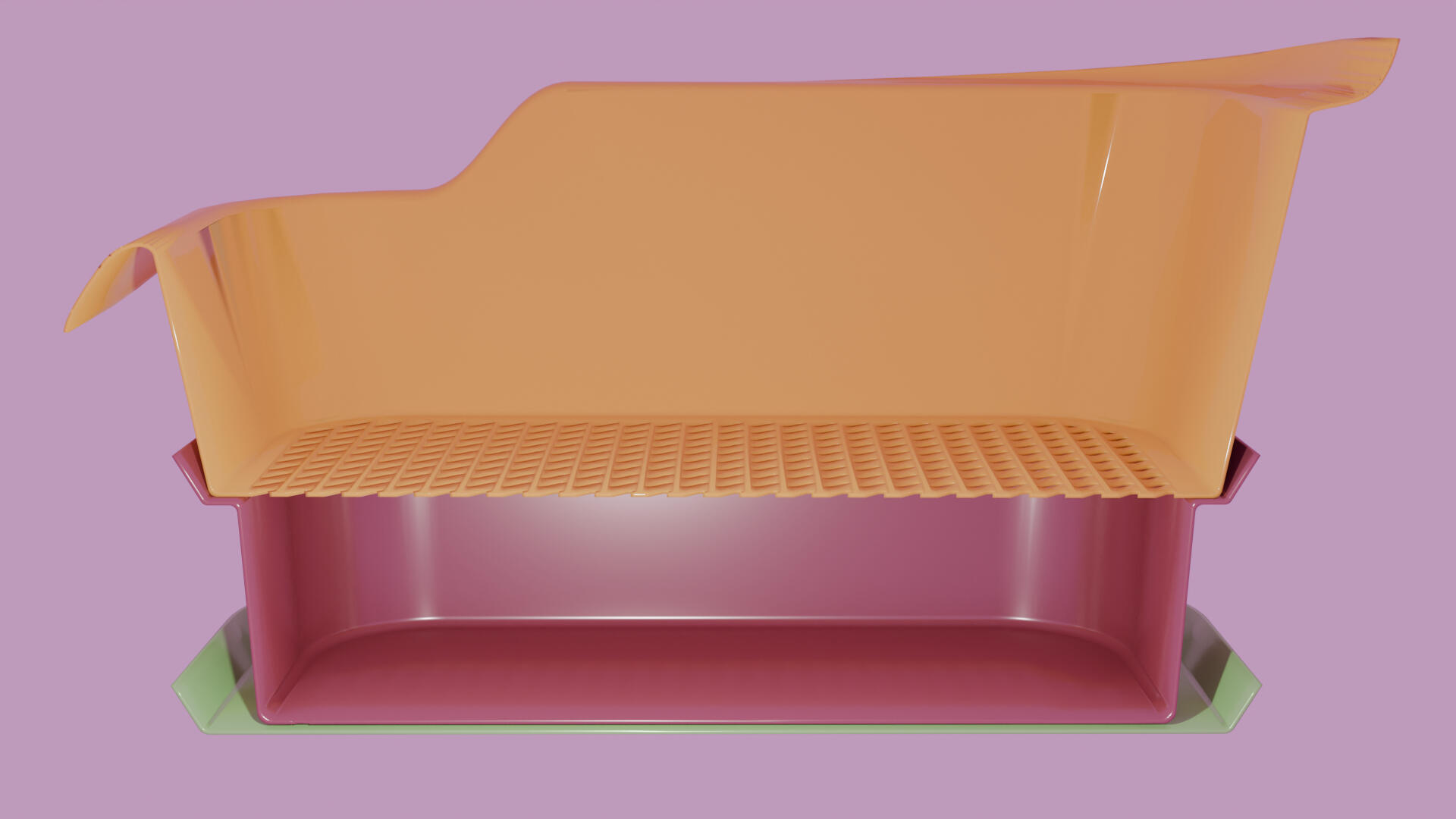
If you’ve ever been overwhelmed by the dust and odor that traditional clay litters can create, you’re not alone. Cat owners around the world are turning to wood pellet litters as a cleaner, more sustainable, and more effective alternative. Made from compressed sawdust or recycled wood fibers, these pellets offer a natural, eco-friendly solution that benefits both your cat’s health and your home’s cleanliness. But how do they actually work, and what sets them apart from the countless other litter options on the market? Let’s dig in.Understanding Wood Pellet Litter1. Composition and Formation
Wood pellet litters are typically created from renewable wood sources like pine or recycled wood shavings. These materials are ground, dried, and compressed into small, dense pellets. Unlike traditional clumping litters, these pellets don’t rely on chemicals or synthetic binders. Instead, they use natural wood fiber to absorb moisture and neutralize odors naturally.2. Absorption and Odor Control
When your cat urinates on wood pellet litter, the pellets gradually disintegrate into sawdust-like granules that trap the moisture. Over time, the used, damp pellets sink to the bottom, leaving fresh, intact pellets on top. Natural wood oils help neutralize ammonia odors, meaning you enjoy a fresher-smelling home without relying on artificial fragrances.3. Dust-Free and Low-Tracking
Because the pellets are larger and heavier than typical clay granules, tracking is significantly reduced. Your cat’s paws are less likely to spread debris throughout your home. This also means significantly less dust, helping maintain cleaner air quality—particularly beneficial for households with allergies or respiratory sensitivities.4. Biodegradable and Eco-Friendly
Another major advantage of wood pellet litter is its environmental impact. Because it’s sourced from renewable materials, it’s biodegradable and compostable, reducing the burden on landfills and lessening your household’s carbon footprint.Introducing the Mrcatman DoubleDecker Wood Pellet Litter BoxIf you’re ready to give wood pellet litter a try, the Mrcatman DoubleDecker Wood Pellet Litter Box offers an enhanced experience tailored specifically to this type of litter. It’s not just a litter box; it’s a carefully engineered system designed to simplify maintenance, reduce odors, and keep your home spotless—ensuring both you and your cat are happy.What Makes the Mrcatman DoubleDecker Special?1. Two-Layer Design:
The DoubleDecker features a dual-level structure: the top layer holds fresh wood pellets, while the lower tray collects the disintegrated sawdust from used pellets. Over time, you can simply shake the top tray, allowing the used material to sift down and leaving the cleaner pellets intact on top.2. Easy Maintenance:
Traditional litter boxes often demand daily scooping and frequent replacements. With the Mrcatman DoubleDecker, maintenance is streamlined. Just empty the lower tray periodically, and top up the fresh pellets as needed. It’s a time-saving, hassle-free approach.3. Enhanced Odor Control:
Because the used sawdust is separated from the fresh pellets, lingering odors are greatly minimized. The natural odor-neutralizing properties of the wood, combined with the DoubleDecker’s smart design, result in a cleaner-smelling environment.4. Cost-Effective and Long-Lasting:
Wood pellets tend to last longer than traditional clay litters. Paired with the efficient DoubleDecker system, you’ll use fewer pellets over time, translating into cost savings and less frequent litter changes.5. Great for Multi-Cat Households:
The DoubleDecker can accommodate multiple cats, ensuring a consistently clean surface for each visit and making it easier to maintain a harmonious, hygienic environment.Other Wood Pellet Litter Box Brands in the MarketWhile the Mrcatman DoubleDecker system stands out for its innovative design and ease of use, it’s worth mentioning that other brands have also ventured into the wood pellet litter arena—though in our opinion, none quite match the level of functionality and convenience that Mrcatman provides.- Arm & Hammer: Known for its durability and easy-to-use designs, Arm & Hammer offers a range of litter solutions that are reliable and straightforward.
- Van Ness: Van Ness provides affordable and functional sifting litter boxes, making them a go-to choice for budget-conscious cat owners.
- Pet Mate: Pet Mate’s products feature high-quality materials and user-friendly designs, ensuring a decent experience for those new to wood pellets.
- Omega Paw: Renowned for innovative designs that minimize mess and effort, Omega Paw provides a unique take on simplifying litter maintenance.
- Nature’s Miracle: With antimicrobial protection and odor control features, Nature’s Miracle offers solutions designed to keep your home cleaner and more hygienic.Though these brands have their merits, the Mrcatman DoubleDecker Wood Pellet Litter Box combines all the best aspects—easy maintenance, superior odor control, eco-friendliness, and durability—into one premium product.Making the Switch to Wood PelletsTransitioning to wood pellets is simple but might require some patience. Start by mixing a small amount of pellets into your cat’s current litter, then gradually increase the ratio until you’ve fully switched over. Most cats adapt quickly, thanks to the natural aroma and comfortable texture of the wood pellets.Final ThoughtsWood pellet litter provides a cleaner, greener, and more efficient litter box experience. When paired with the Mrcatman DoubleDecker Wood Pellet Litter Box, you’re getting a streamlined, hygienic system that reduces both odor and effort. While other brands like Arm & Hammer, Van Ness, Pet Mate, Omega Paw, and Nature’s Miracle all offer their takes on wood pellet-friendly litter solutions, none quite compare to the convenience, cost-effectiveness, and overall performance of Mrcatman’s innovative design. By making the switch today, you’re not just choosing a better litter box—you’re investing in a healthier, happier home for you and your feline companions.
The Ultimate Guide to Choosing the Perfect Litter Box for Your Cat
June 6, 2024
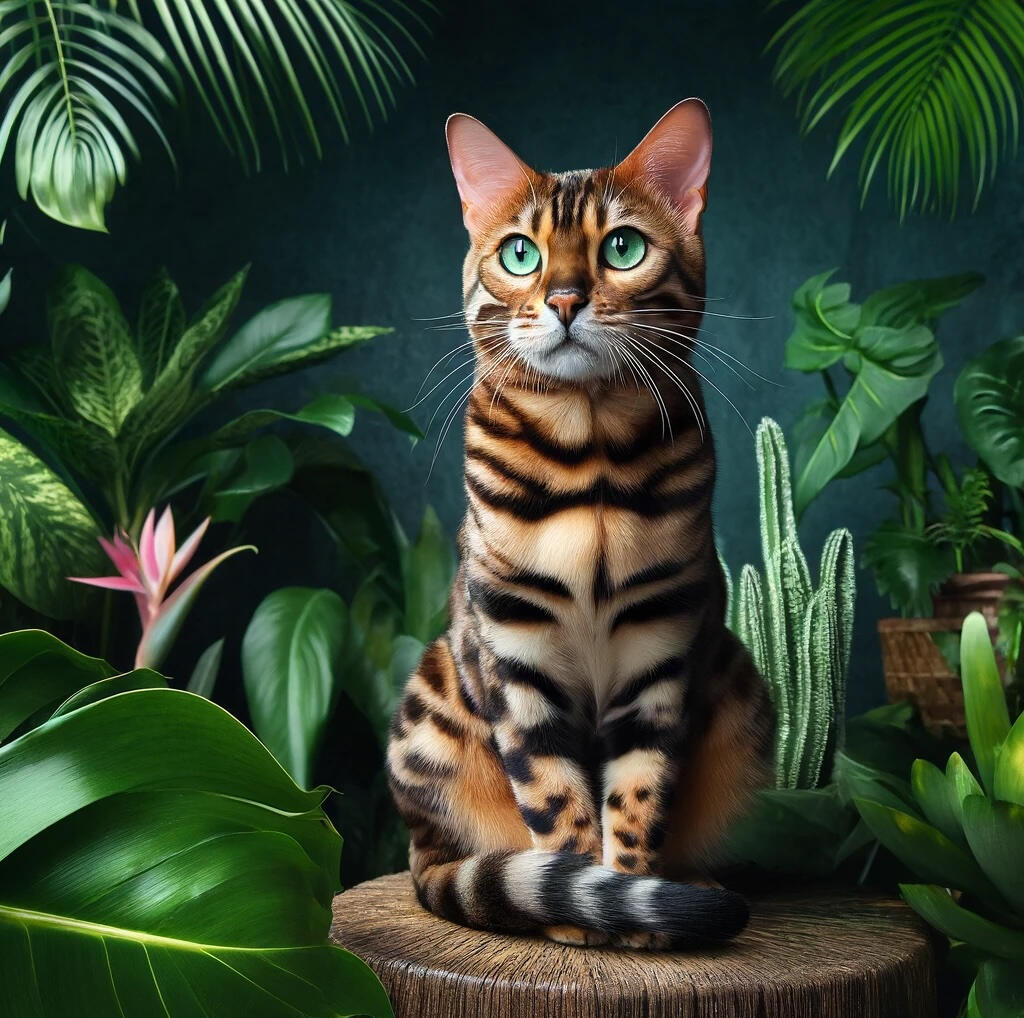
Hey there, fellow cat lovers! If you’ve ever felt like navigating the world of cat litter boxes is more confusing than deciphering ancient hieroglyphics, trust me—you’re not alone. With so many types, materials, and features to consider, it can be tough to know where to start. But take heart: we’ve sifted through the clutter (pun intended) to bring you this comprehensive guide.Best of all, we’ll introduce you to our very own Mrcatman DoubleDecker litter box system, specifically designed to work with our capsule-shaped wood pellet litter. Read on to discover how we’re making litter box life easier, cleaner, and more comfortable for both you and your cat.Why the Right Litter Box MattersFirst things first: why put so much thought into choosing a litter box? Simply put, a comfortable, well-designed box ensures your cat will consistently use it, which means fewer “accidents” and a happier home. The right setup can improve your cat’s health (cleaner paws, reduced respiratory irritants), your convenience (less odor, easier cleaning), and your peace of mind.Meet the Mrcatman DoubleDecker Litter BoxBefore we dive into the different kinds of litter boxes out there, let’s highlight what makes our flagship product, the Mrcatman DoubleDecker, so special. Designed to work seamlessly with our capsule-shaped wood pellet litter, this two-layer system sifts and separates used litter from fresh pellets automatically. It takes the guesswork out of cleaning and helps control odor like never before.Other Types of Litter Boxes: The Lowdown
While we wholeheartedly believe our DoubleDecker system is a game-changer, it’s important to know what else is out there. Every cat has its quirks, and understanding your options can help you make the best choice.Open Litter Boxes
Pros: Easy to clean, well-ventilated, and often budget-friendly.
Cons: Little privacy for your cat, and odors can escape more easily.Covered Litter Boxes
Pros: Offer your cat privacy, contain smells, and minimize the spread of litter.
Cons: Can trap odors if not cleaned regularly, and some cats may feel cramped.Self-Cleaning Litter Boxes
Pros: Automates scooping, making maintenance easier.
Cons: Can be noisy, costly, and may intimidate some cats until they adjust.Top-Entry Litter Boxes
Pros: Reduce litter scatter and can deter dogs from getting inside.
Cons: Not ideal for older or less agile cats who may struggle to jump in and out.Disposable Litter Boxes
Pros: Great for travel or temporary use.
Cons: Not the most eco-friendly and can get expensive over time.The Importance of Size and PlacementNo matter which style you choose, size is crucial. Your cat should have enough space to enter, turn around, and dig comfortably. As a rule of thumb, aim for a box at least one and a half times the length of your cat.When it comes to placement, think peaceful and accessible. Cats appreciate low-traffic areas where they can handle their business undisturbed. If you have multiple cats, consider multiple boxes to prevent territorial disputes.Let’s Talk Litter: Why Wood Pellets?Traditional litters—like clumping clay or silica crystals—have their place, but wood pellet litter is quickly gaining traction for good reasons:Odor Neutralization: Wood pellets naturally contain oils that help neutralize ammonia smells.
Dust-Free: Less dust means cleaner air and healthier lungs for both you and your cat.
Eco-Friendly: Made from renewable resources, wood pellets are biodegradable and easier on the planet.
Our Mrcatman capsule-shaped wood pellet litter takes these benefits a step further by using specially formed pellets that resist scattering and break down efficiently.Maintenance: Keep it Clean, Keep it Happy
A clean box is a happy box. Scoop daily and give it a thorough clean at least once a week with mild, pet-safe soap and warm water. With the Mrcatman DoubleDecker, maintenance is cut down significantly. Just empty the lower tray when full, add a handful of fresh pellets to the top tray as needed, and enjoy the extra free time.My Personal Litter Box JourneyWhen I first brought my cat home, I tried a basic open litter box. It worked, but the odor and dust were less than pleasant. After experimenting with covered boxes and different types of litter, I finally discovered wood pellets and, eventually, the Mrcatman DoubleDecker system. Now, I spend less time cleaning, my home smells fresher, and my cat seems happier than ever.Final ThoughtsChoosing the right litter box can feel overwhelming, but the payoff is huge: a cleaner home, a healthier cat, and less stress all around. Whether you’re a longtime cat parent or new to the world of litter, take the time to explore your options. We believe the Mrcatman DoubleDecker paired with our capsule-shaped wood pellet litter sets the gold standard for simplicity, cleanliness, and feline comfort.Got your own litter box triumphs (or tribulations) to share? Drop a comment below—we’d love to hear your experiences and insights!Happy catting, and welcome to the cleaner, greener future of feline care!
The Hidden Dangers of Clay Litter Dust: Protecting Your Cat's Health
June 6, 2024
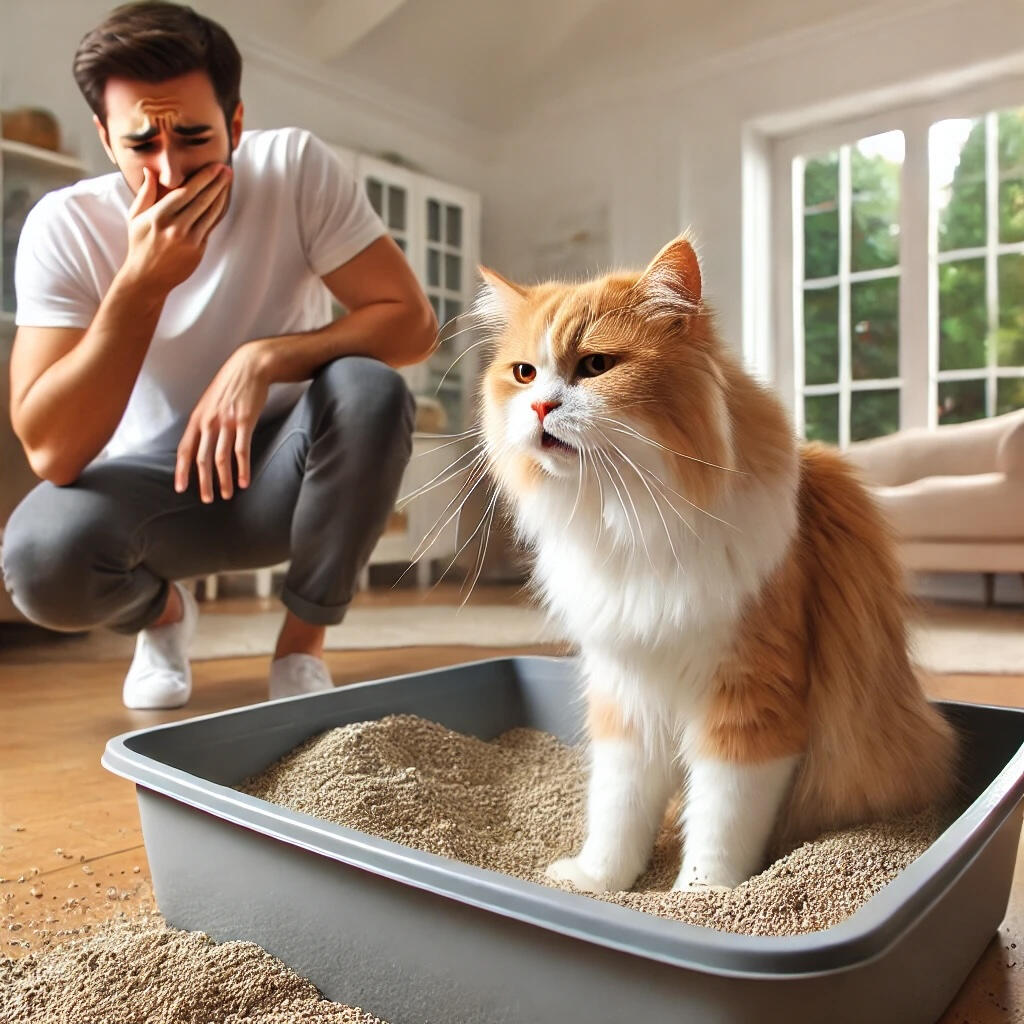
As cat owners, we strive to provide the best for our feline companions, from the healthiest food to the coziest beds. However, one aspect of cat care that often goes overlooked is the type of litter we use. While clay litter is popular for its clumping ability and affordability, the dust it produces can pose significant health risks to our beloved cats. In this blog post, we’ll explore how clay litter dust can harm your cat and offer safer alternatives to keep your kitty happy and healthy.Respiratory Issues: More Than Just a NuisanceInhalation of Dust: Every time your cat digs in the litter box, fine dust particles are released into the air. When inhaled, these particles can cause respiratory issues, particularly in cats with pre-existing conditions like asthma or bronchitis. You might notice your cat coughing or wheezing after using the litter box—a sign that the dust is affecting their respiratory system.Chronic Exposure: Long-term exposure to clay litter dust can lead to chronic respiratory problems. Persistent coughing, wheezing, and difficulty breathing are all red flags that your cat's lungs are being irritated by the dust.Allergies and Irritations: Not Just a Human ProblemAllergic Reactions: Cats can develop allergic reactions to the chemicals or fragrances added to clay litter. Symptoms include sneezing, a runny nose, and eye irritation. If you notice these signs, it might be time to reconsider your choice of litter.Skin Irritation: Dust can also cause skin irritations, particularly on sensitive areas like your cat’s paws. This can lead to excessive licking, which increases the risk of infections and discomfort.Digestive Problems: A Hidden HazardIngestion of Dust: Cats are meticulous groomers and often lick their paws after using the litter box. This grooming behavior can lead to the ingestion of dust particles, which may cause digestive issues such as stomach irritation and vomiting. Over time, ingesting these particles can lead to more severe health problems.Environmental Toxins: Beyond the Litter BoxChemical Exposure: Some clay litters contain silica dust or other harmful chemicals. These substances can be inhaled or ingested by your cat, posing additional health risks. The long-term effects of these chemicals can include serious health conditions that could affect your cat's overall well-being.Toxin Absorption: Prolonged exposure to these chemicals is concerning. As your cat interacts with the litter, they can absorb toxins through their skin or ingest them, leading to a buildup of harmful substances in their body.Behavioral Changes: Listen to Your CatAversion to Litter Box: If your cat finds the dust irritating or uncomfortable, they might develop an aversion to using the litter box. This can lead to inappropriate elimination behaviors, which are not only frustrating but also a sign that your cat is unhappy with their litter situation.Safer Alternatives: Protect Your Feline FriendTo minimize these risks, consider switching to alternative litters that are safer and more comfortable for your cat. Here are a few options:Pellet Litters: Made from recycled paper, wood, or other natural materials, pellet litters produce less dust and are generally safer for your cat’s respiratory health.Crystal Litters: Silica gel crystals are an excellent low-dust option. They are highly absorbent and can help control odors effectively.Natural Litters: Corn, wheat, or walnut-based litters are also viable options. They produce less dust and are biodegradable, making them environmentally friendly.Choosing a high-quality, low-dust litter can significantly reduce health risks for your cat. By making this small change, you can help ensure that your feline companion stays happy, healthy, and breathing easy.








































































































































































































































